






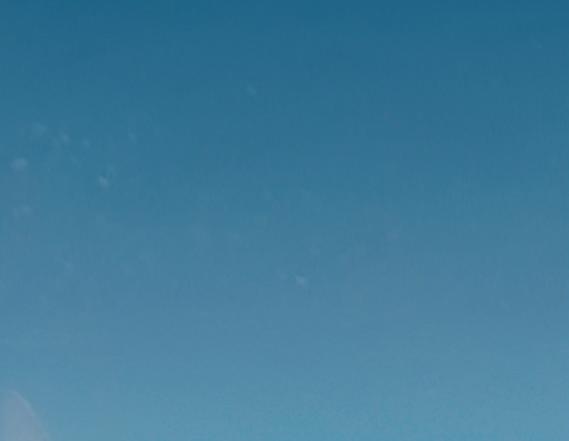















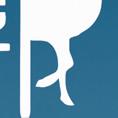


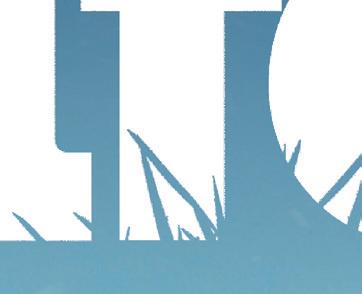





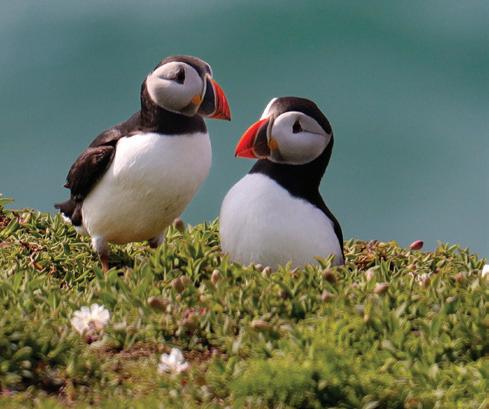




Sharks at last for Protection IRISH ISSN16495705 • SUMMER ’23 MAGAZINE OF THE IRISH WILDLIFE TRUST
BULLFINCH
PUFFINS
IN IRELAND: IRELAND’S BEST WILDLIFE MAGAZINE PLANT DECLINES CITIZENS’ ASSEMBLY ANGEL SHARKS NATURE RESTORATION LAW
Basking
•
•
• GREAT-CRESTED GREBE SPOTTED
Donate to the Irish Wildlife Trust to help us connect communities with nature onate connect communities nature




Registered Charity Number (CRA): 20010966



If you believe in our good work, please support us in any way you can.
Your generosity allows us to work to protect Ireland’s wildlife and habitats.
You can make your donation on our donations page www.iwt.ie/donate
Thank you!
Chairperson’s Comment





Dear Friends of the Irish Wildlife Trust, I hope our summer edition nds you well. Summer brings a promise of warmth, more time to explore the great outdoors and the luxury of catching an hour sitting in the sun.
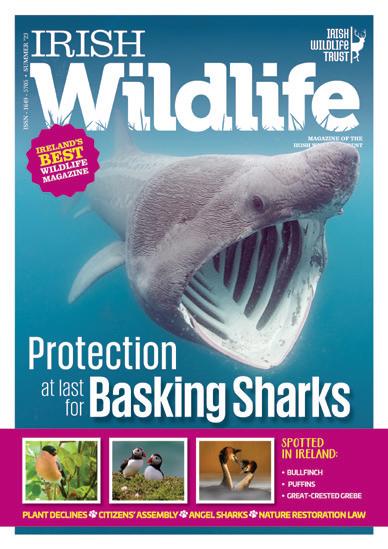
In the IWT we’re honoured to have received the Lord Mayor’s Award for our contribution to Dublin, we’re excited to see the report from the Citizens’ Assembly on biodiversity loss and we’re looking forward to a summer packed with events across the country for heritage week.
e report from the Citizens’ Assembly on biodiversity loss is well worth a read. It brings focus and clarity with 159 recommendations which include legislation, public engagement, business and environmental sectors. Critically, it calls for urgent action and government commitment to change. Each of us has an important role to play in understanding the actions required and advocating for action both with politicians and within our local communities.
If you would like to take personal action (please do!), the All-Ireland Pollinator plan is an invaluable resource, and the newest publications leave no stone unturned with recommendations for gardens, farmland, local communities, sports clubs, golf courses and more. It gives speci c guidance, including plants, shrubs and trees to best support biodiversity wherever you are. ese resources are freely available at www.pollinators.ie.
Personally, I’m learning more about our native plants and species and the importance of these in preserving our natural ecosystem. It’s worrying to see how imported species disrupt the delicate balance in our environment and may become invasive - the increasing prevalence of Japanese knotweed and rhododendron demonstrate how quickly imported species can take hold, to the detriment of the environment they inhabit.
In the past I’ve been guilty of scattering wild ower seeds, albeit with the best of intentions. I’ve learnt that the best course of action is to leave our meadows alone so our wild owers have a chance to grow naturally. Each of us can educate ourselves and with better information we can take better actions to improve our world.
e actions we can take are simple, yet we need to be intentional about taking action. By planting native trees and allowing the delicate seeds within our meadows to grow and ourish, we will increase the food supply for pollinators and have a positive impact on biodiversity in Ireland.
I’ve recently planted young hawthorn and hazelnut trees which are settling in well, and I’ve
loved seeing the dandelions in full bloom across the country. My Mam always said “a weed is simply a ower in the wrong place”, and on re ection this is so true. Perhaps we can have a collective mindset shi - dandelions are a beautiful wild ower and should be celebrated as such, wherever they grow!

In our summer magazine, we have another bumper issue which is packed to the brim with information.
It’s fascinating to read of the vital role of our semi-natural grasslands and the devastating loss that is occurring. Our “40 shades of green” is at risk, and Dr Maria Long from the NPWS helps us to see how we can take action to protect our gorgeous grasslands. Tim Clabon reminds us of the importance in reporting wildlife crime to the NPWS and gives us clear guidance to do so.
We hear from Grace Carr about the extensive population of sharks, skates and rays in our waters; Louise Overy seeks community engagement in supporting the recovery of the critically endangered angel shark to prevent extinction, while Donal Gri n celebrates the addition of the basking shark to the protected species list. Richard Nairn makes a compelling case for restoring river ows with evidence of the positive impact for freshwater ecosystems, and renewable energy generation.
ere are lovely examples of community engagement across the country, and more opportunities to engage through Heritage Week in August. Gordan D’Arcy shares the wonderful example of a local community engaging with, and building appreciation for, the River Clare as a rich wildlife habitat. Ricky Whelan shares the return of the In Your Nature podcast and suggests a series of in-person events to join.
Every season I’m thrilled to see the wonderful contributions to our magazine from all of the authors. It’s testament to the passion and commitment of this incredible community, and I would like to thank each and every one.
For now, we’re looking forward to Bloom in the Park and hope you will pop by to say hello. Wishing you the very best for a fabulous summer, I hope it makes your heart sing.
ank you for your continued support.
Claire Walsh, Chair of the Irish Wildlife Trust claire@iwt.ie
Pass it on. If you’re finished with your Irish Wildlife don’t throw it in the bin. Pass it on to someone who you think may enjoy it – or ask your local library or doctor’s office to leave it in the reception. You’ll help the environment and the IWT while you’re at it. Irish Wildlife is 100% recyclable, so if you do choose to throw it out, please put it in the green bin.
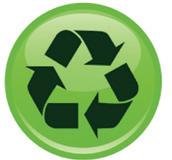
WELCOME Irish Wildlife Summer ‘23 1
Contents page credits:
Osprey by NASA
River clare animal sculptures project by XXX
Dead-nettle leaf beetle by iStockphoto
Basking sharks by Sea Fever Productions
Faoi Bhláth by Aoife Dowd
Lough Ree, Roscommon County by Adobe Stock
Published by Ashville Media Group www.ashville.com All
in a retrieval system or transmitted in any form or by any means without written permission from the publisher. Opinions and comments expressed herein are not necessarily those of the publisher. While every effort has been made to ensure that all information contained in this publication is factual and correct at time of going to press, Ashville Media Group and the Irish Wildlife Trust cannot be held responsible for any inadvertent errors or omissions contained herein. Printed on Please recycle this copy of Irish Wildlife
Cover Image Credit Basking shark by Doug Perine
articles © 2023 No part of this publication including the images used may be reproduced, stored

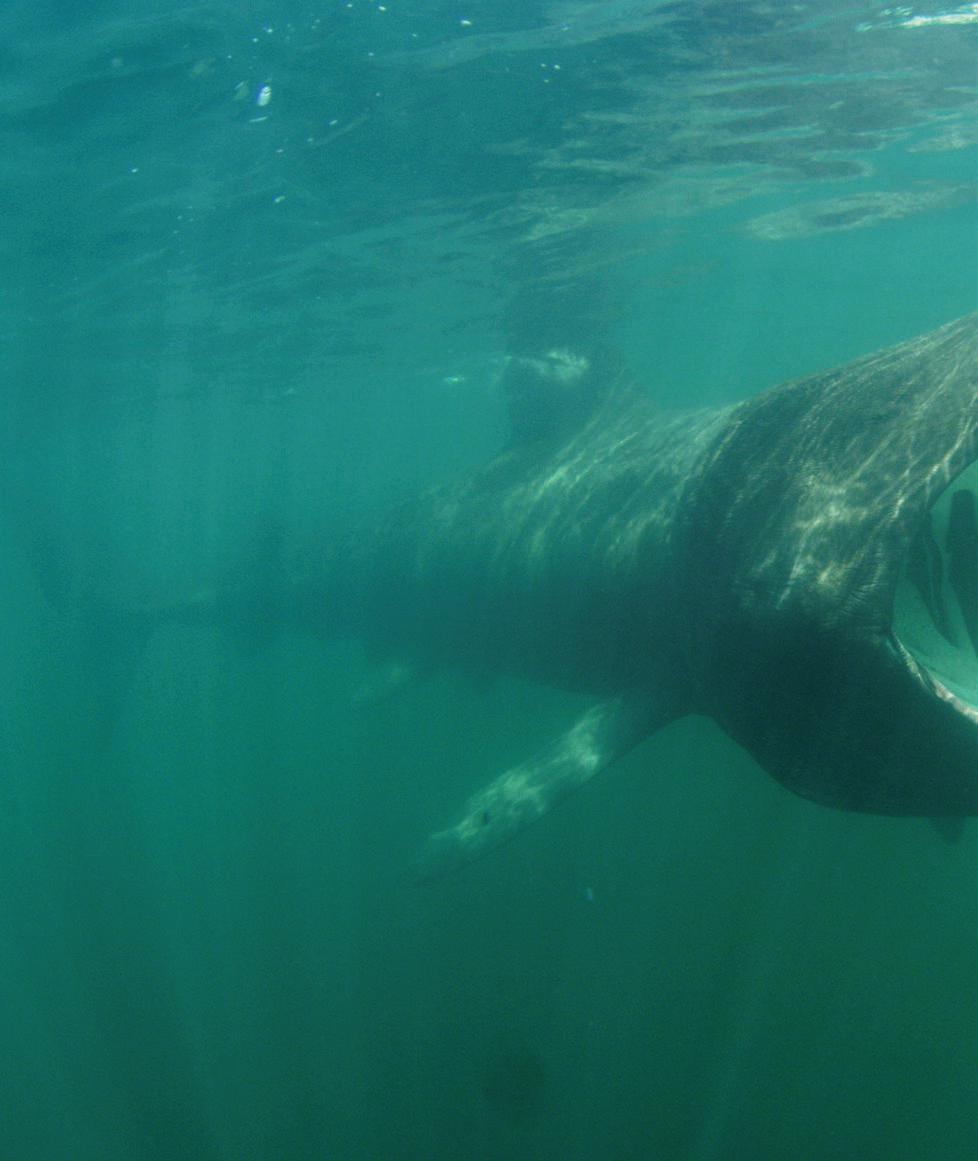
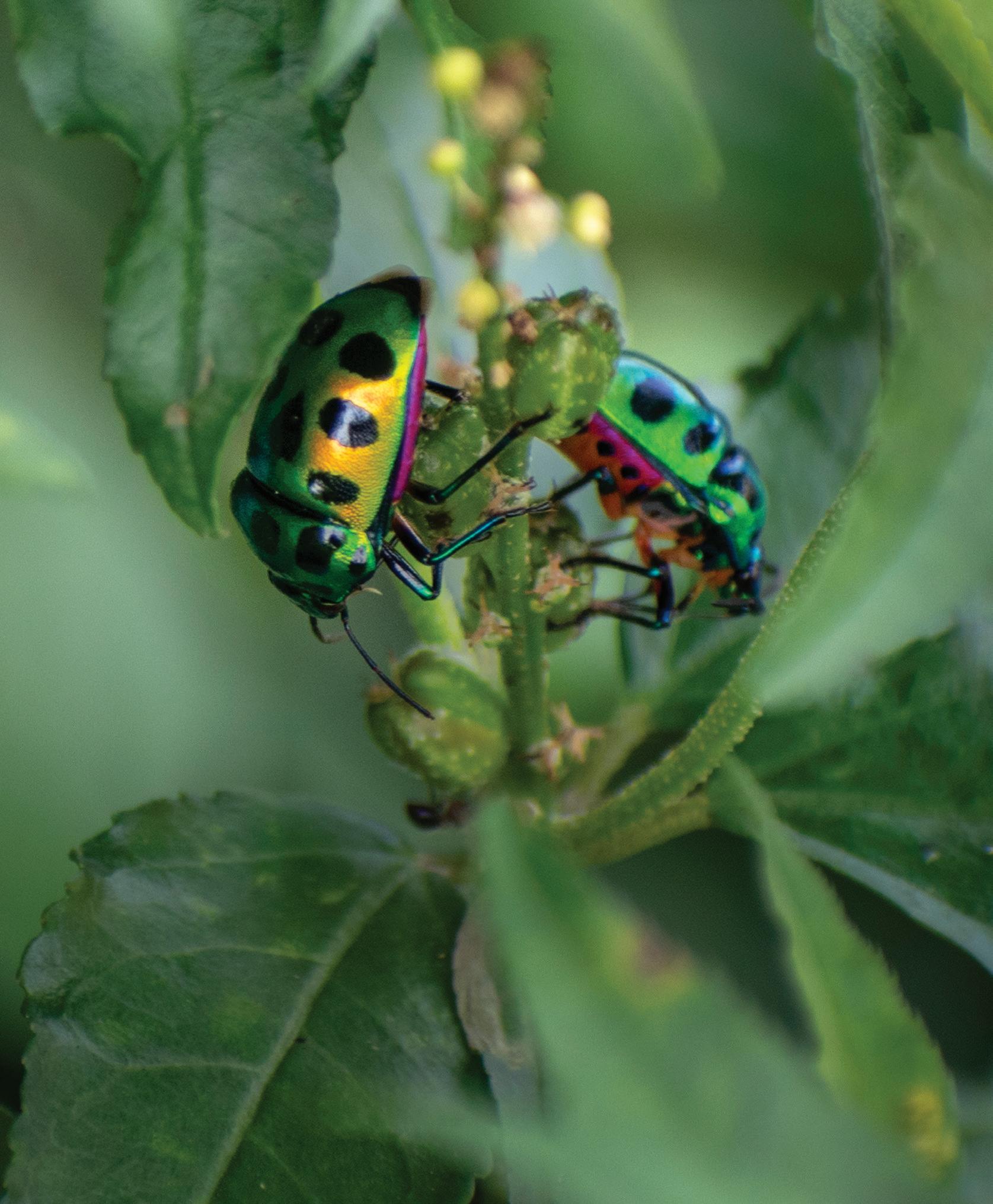
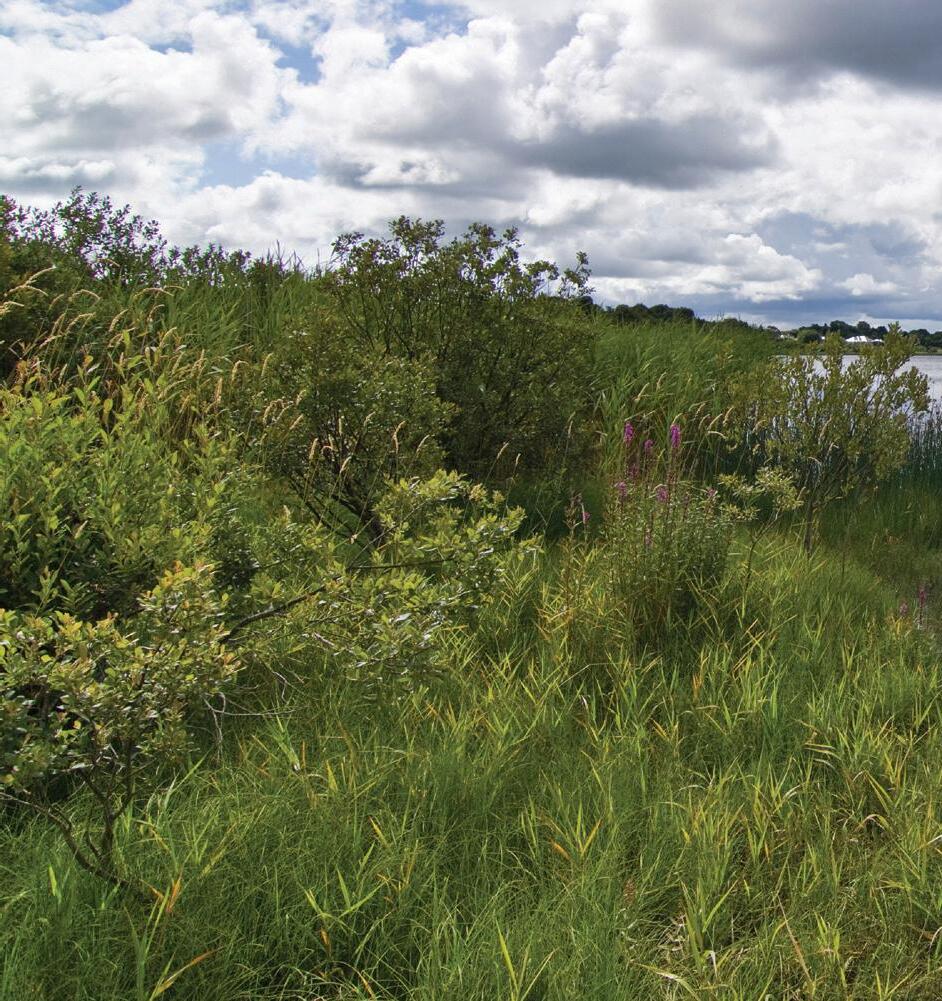

Irish Wildlife Summer ‘23 2



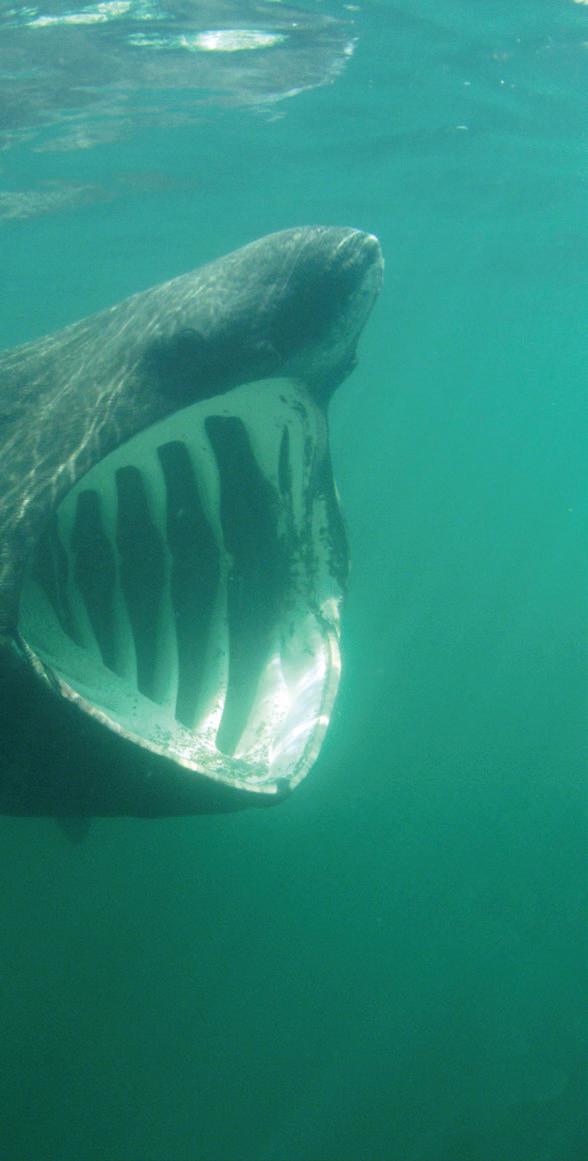

Irish Wildlife Summer ‘23 3 Contents 04 ABOUT US Discover more about the work of the IWT and how you can get involved. 05 CONSERVATION NEWS Tim Carbon compiles the latest national and international news from the world of conservation 11 IWT ACTIVITY UPDATE Updates on IWT campaigns and activities 16 BASKING SHARKS ARE BACK Donal Griffin from Fair Seas 20 WILD IDEAS Maria Long from the NPWS on the value of our seminatural grasslands 22 GORDON D’ARCY Remembering a much altered river in Co. Galway 24 SUMMER FOCUS Christopher Doyle and Billy Flynn takes us the second part of a tour of food labels 26 CITIZEN SCIENCE Offaly’s new biodiversity officer Ricky Whelan with reasons to be hopeful 29 ARTIST’S PAGE Aoife Dowd from Connemara 30 FRONT LINE Louise Overy on a new project to highlight the critically endangered angel shark 32 WILD RIVERS Richard Nairn releases the latest in his trilogy looking at wild spaces in Ireland 34 FACEBOOK PHOTOS 36 COMPETITION Your chance to win
HAVE COMMENTS?
Editor: Pádraic Fogarty
Magazine queries email: editor@iwt.ie



Information on campaigning and policies email: irishwildlife@iwt.ie
Snail mail: The Irish Wildlife Trust, 8 CABRA ROAD, DUBLIN 7, D07 T1W2
Web: www.iwt.ie
Social media: facebook.com/IrishWildlifeTrust twitter.com/Irishwildlife instagram.com/irishwildlifetrust/
Registered Charity Number: 20010966
About Us
e Irish Wildlife Trust was founded in 1979 and aims to conserve wildlife and the habitats it depends on throughout Ireland, while encouraging a greater understanding and appreciation of the natural world.

e IWT is dedicated to creating a better future for Ireland’s wildlife through: Motivating and supporting people to take action for wildlife.
Education and raising awareness of all aspects of Irish wildlife and conservation issues. Research of the natural environment. Acquiring and managing nature reserves to safeguard species and habitats.
Lobbying decision-makers at all levels to promote policy in Ireland that provides a sustainable future for wildlife and people. Working in partnership with other organisations to achieve results that matter for conservation.
Irish Wildlife is published quarterly by the IWT.
HOW CAN YOU HELP?
You, our members, make the IWT what it is. rough your subscriptions and support we can undertake the projects that are bene ting Ireland’s wildlife. If you would like to help more, here’s what you can do:

• Make a one-o donation to the IWT.
• Give IWT membership as a gi .
• Volunteer – we are always looking for people to help out. ere are lots of ways to get involved, from helping with important admin work in our o ce to helping us increase membership by volunteering at public events. See our website www.iwt.ie for details or contact the o ce directly.

Supported by

e IWT encourages action at a local level and has a number of branches around the country: Dublin: dublinbranch@iwt.ie facebook.com/DublinBranchIrishWildlife Trust, dubliniwt.blogspot.ie
Waterford: Denis Cullen, iwtwaterfordbranch@gmail.com, deniscullen@eircom.net, irishwildlifetrust. blogspot.ie
Kerry: Ger, iwtkerry@gmail.com, www.facebook.com/KerryIWT
Limerick: limerickbranch@iwt.ie / https://www.facebook.com / IWTLimerickBranch
Galway: Dan, iwtgalway@gmail.com, www.facebook.com/IWTgalwaybranch
Laois/O aly: Ricky, iwtlaoiso aly@gmail.com, www.facebook.com/IWTlaoiso alybranch
Monaghan: monaghanbranch@iwt.ie
• Do you have land that you would like used for conservation? We are always on the lookout to establish new sites to enhance wildlife or provide education opportunities.
• Remember us in your will. Why not leave a lasting legacy towards conserving Ireland’s natural heritage? e IWT uses all funds towards our campaigns, managing reserves and our education programmes. Please visit www.mylegacy.ie.
• Set up a branch. Are you passionate about wildlife and are in a county that does not have an IWT branch? Contact the o ce and we can give you the support you need to get up and running.
Irish Wildlife Summer ‘23 4 IRISH WILDLIFE TRUST
IMAGES THIS PAGE:
TOP: Thornback Ray by Mark Thomas
BELOW: Species rich grassland
Keep up to date on all the latest news from the Irish Wildlife Trust on www.iwt.ie
CONSERVATION NEWS













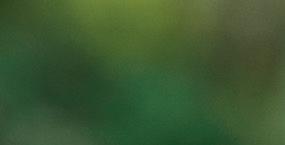

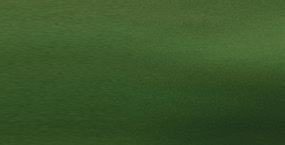
The latest national and international news from the conservation world, compiled by Tim Clabon




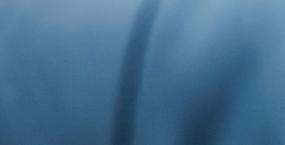
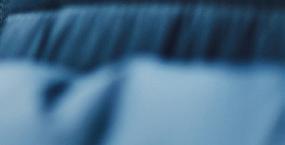



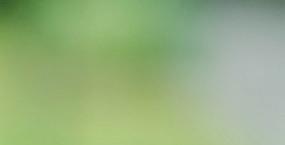
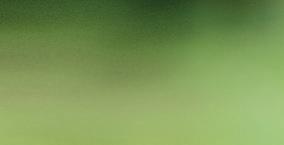
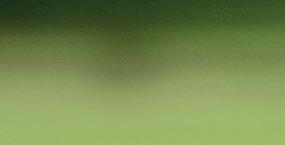
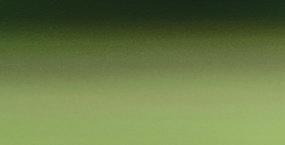

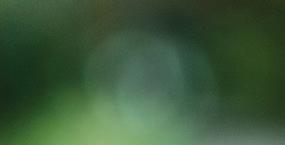



IRISH NEWS

 By Tim Clabon
By Tim Clabon
Reporting Wildlife Crime in Ireland

Have you witnessed a wildlife crime? Do you know who to call? Do you know what information is needed? If not, or even if you do, PAW, Ireland’s Wildlife Crime Reporting App, can help simplify reporting wildlife crime.

Reporting all types of wildlife crime is important. Crimes against our wildlife can lead to population declines, environmental and habitat damage. It puts biodiversity at risk and is unnecessarily cruel to the creatures involved. Illegal activities such as badger baiting are organized by criminal gangs and poaching is the most nancially lucrative crime a er drug, rearms smuggling and human tra cking.
Initially launched in 2019/2020 PAW Ireland’s Wildlife Crime Reporting App is available for everyone to use on either Android or Apple phones as well as web based applications.
PAW Ireland is a group of statutory agencies, non-statutory agencies and interested parties of which the Irish Wildlife Trust is a member, with the common goal of combating wildlife crime through identifying and analysing wildlife crime types in Ireland and raising awareness of wildlife crime through publicity, education and campaigning.
e app itself has two main purposes. Firstly, it guides the person reporting the crime on what information to provide. is includes your details (name and email address), incident type, species involved or environmental damage (e.g., illegal hedgecutting), as well as the location (using your phone's location or identifying it on a map). e app also asks for weather conditions at the time as well as giving the opportunity to provide more details about the location. Time and date are also recorded as well as information on people seen, details of any vehicles involved and equipment or dogs observed.




Once the information is lled in the ‘Generate Email’ button is selected and you are asked to enter an email address. As well as generating a report, the app provides phone numbers for the National Parks and Wildlife Service (NPWS) regional o ces or Garda should you wish to make a phone call instead.




e app itself does not send an email to the NPWS, but creates an email template with your report that you simply send from your own email account. No personally identi able information is collected by the app or stored.

It is also advised to take any photos or videos of the scene if you can to attach to the email.
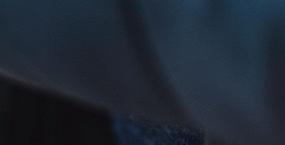



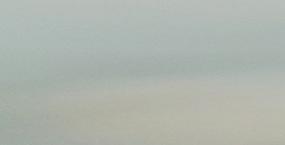





e second purpose of the app is to collect information on the type of wildlife crimes occurring in Ireland as well as locations, frequency and dates. is information is important to PAW Ireland. As well as being used to analyse the types of crime it can also contribute to raising awareness of the importance of tackling wildlife crime, used by journalists when writing stories, and to ask questions to our public representatives and the NPWS.
e app itself is constantly being improved. Creating awareness about the app and making use of it or making donations towards its running will help work towards protecting Ireland’s wildlife. And as more people use the app, the more attention it will gain to help towards tackling wildlife crime in Ireland. So spread the word; there's an app on your phone that can help ght wildlife crime.
As always, stay safe. We ask you not to put yourself at risk by approaching or confronting people involved in crime or make it obvious that you may be reporting them. Do not touch anything, especially suspected poisoning cases unless they pose a risk, and then only a er seeking advice.
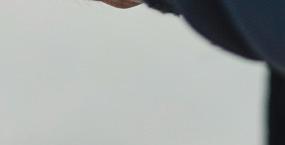



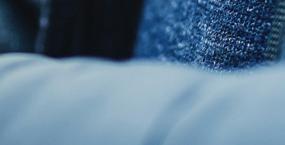

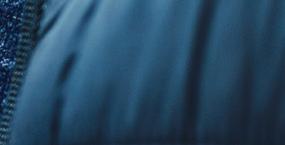

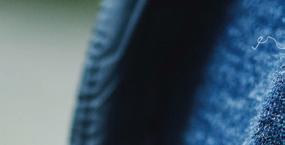

e app can be downloaded from the Google Play Store or Apple App Store, but can also be downloaded from https://wildlifecrime. ie/reporting-a-wildlife-crime/. e web based app can be accessed directly here: https://paw-ireland.xapp.org/





CONSERVATION NEWS Irish Wildlife Summer '23 5
The number of insects declining has been well documented in agricultural areas. However, in forests work on insect populations has mostly concentrated on species regarded as pests. Recently, a research team led by the Technical University Darmstadt, Germany have been studying the trends in insect populations within German forests. Contrary to what researchers believed, the results showed that the majority of the species studied were in decline. Their results were published in the scientific journal Communications Biology.
The study was conducted as part of the ‘Biodiversity Exploratories’ an interdisciplinary infrastructure priority program funded by the German Research Foundation (DFG) since 2006, in three regions: the Hainich National Park, the UNESCO Biosphere Reserve Schorfheide-Chorin and the UNESCO Biosphere Reserve Swabian Alb.
Forests in Central Europe as well as elsewhere have been in the public eye due to their importance for mitigating climate change, and because of the ever-increasing damage resulting from hot and dry summers. As well as the services forests provide humans, many species rely on forest ecosystems, most of these are insects. While pest species have been well studied, little is known about the status and trends within populations of the many other species found in forests.
The study carried out by researchers from the Technical Universities of Darmstadt and Munich along with collaboration with other researchers showed how the populations of 1,805 species have developed within German forests between the period of 2008 and 2017. To the researchers surprise the number of individual insects had declined for the majority of species studied.
This is particularly surprising when compared to agricultural land, where the type of land use has changed over time and intensified, for example due to increased use of more effective pesticides, the removal of edge structures such as ditches and hedgerows and the increased cultivation of corn.
Disturbances of this type are not believed to play a role in forests. Nevertheless, a clear
Insect Decline in German Forests
decline in forest species was demonstrated, with larger and more abundant species declining. While herbivorous insects showed a slight increase in general, significantly more species decreased in all other feeding types such as predators or deadwood decomposers.
The decline was found to be greater in forests with a higher proportion of conifers, such as spruce and pine, which are naturally rare in the study areas but have been planted in the past. In contrast, losses of insects were lower in native beech forests. Furthermore, in unmanaged protected forests, the declines were less severe than in intensively managed forests.
This is so far the most comprehensive study on insect decline in Central European forests, and found that insects are not only declining in agricultural landscapes, as previously demonstrated, but also in forests, which cover almost a third of the land area in Germany.
“More than 60 percent of the studied insect species have been declining” says the lead researcher, Dr. Michael Staab from the Ecological Networks Group of the Department of Biology at the Technical University Darmstadt. “This will very likely have an impact on all organisms in our forests as food webs could be altered.” In light of climate change, future research is needed to unravel how increasing drought and the resulting changes in native forests will also affect insect population trends.

Professor Nico Blüthgen, head of the Ecological Networks Group, also added “Our forests are undergoing drastic changes due to the climate crisis. We are currently trying to understand how this affects insect populations.”
The results of the study suggest that targeted management, including promoting a more natural tree species composition and reduced tree harvest, can help mitigating insect decline in our forests.
Irish Wildlife Summer '23 6 CONSERVATION NEWS
INTERNATIONAL NEWS
By Tim Clabon
"THE NUMBER OF INDIVIDUAL INSECTS HAD DECLINED FOR THE MAJORITY OF SPECIES STUDIED"
Chrysolina fastuosa, also known as the dead-nettle leaf beetle.
Photo: iStockphoto
 Squalus acanthias, spurdog.
Squalus acanthias, spurdog.
Photo: Adobe Stock 7
MARINE
NEWS By Grace Carr Irish Wildlife Summer '23
IWT NEWS
Sharks, skates and rays you can spot in the water this summer
MARINE NEWS
By Grace Carr
any people think that we do not have sharks in Irish waters but in fact there are 72 species of sharks, skates and rays (collectively known as elasmobranchs) and they are found on every coast in Ireland. Due to our wide range of habitats, our productive waters and our position in the Atlantic, we are lucky to have a diverse range of elasmobranchs in all shapes and sizes. Here is a selection of what you could see this year.

BASKING SHARK – LIABÁN GRÉINE
Basking sharks can reach up to 12 metres and weigh six tonnes (around the same weight as a large African elephant or two mature orcas). Don’t be alarmed at their awesome size, these fish truly are gentle giants. There is an Irish saying which sums up the beautiful animal perfectly, it is ‘chomh sámh le liamhán gréine’ which means ‘as tranquil as a basking shark’. The basking shark is a planktivorous filter feeder (one of three species of shark in the world which feeds this way) and can filter 1.5 million litres of water in one hour. By doing this it collects tiny species of plants and animals collectively called plankton which are plentiful in Irish waters.
Mysterious circle formations of basking sharks called a ‘torus’ have been seen in Irish waters and scientists are only beginning to figure out what this could mean (read more on this in our feature article in this issue). The formations are not only at the surface and footage has been captured of individuals layered vertically down through the water column swimming in close circles to one another. When the sharks were observed swimming in this formation they were not feeding and the females were a lighter colour than the males. This change in coloration has been observed in other shark species during courtship and mating and so it is quite possible that this is a basking shark mating ritual. How this natural wonder has remained undiscovered in Irish waters for so long makes you wonder how much more there is to learn about these gentle giants!
The Irish Basking Shark Group has a code of conduct on what to do if you encounter a basking shark in the water.
By Mark Thomas
Make sure to follow these rules as they are considered globally endangered on the IUCN Red List and we must all do what we can to allow them to feed and mate in peace.
TOPE SHARKS – FAMRIE, GOBÓG, MADADH GARBH
Tope sharks are a long and slender shark which can reach lengths of around two meters. These sharks are active and fast due to their streamlined body shape and individuals which were tagged in Irish waters have shown up as far away as the Canary Islands. Tope sharks are considered harmless to humans and their prey is quite small in size (usually small fish, crustaceans and other invertebrates). Like most sharks they reach sexual maturity late in life and can live up to 55 years. Unfortunately, their global population is considered
critically endangered by the IUCN and this is partly due to the fact they travel in small schools and are vulnerable to fisheries. An entire school of tope could be caught and killed in one go which is a similar situation to another local species of shark, the spurdog.
SPURDOG - FÍOGACH GOBACH
You can find this species all year round in Irish waters, not just the summer, but they tend to stick to deeper waters during winter. They get their name from the spines found in front of their dorsal fins. This species is vulnerable to fisheries due to the fact they travel in schools and females tend to aggregate together, which isn’t great when the females are all pregnant. They also have one of the longest pregnancies known of any vertebrate lasting up to 22 months and they usually
Irish Wildlife Summer '23 8 IWT NEWS
�Thornback ray.
M"MYSTERIOUS CIRCLE FORMATIONS OF BASKING SHARKS CALLED A ‘TORUS’ HAVE BEEN SEEN IN IRISH WATERS"
have quite small litters of two-three pups. For these reasons it can take decades for spurdog populations to recover from overfishing. They are listed as endangered on the Irish Red List for Cartilaginous Fish (2016) and until this year it was illegal to target spurdog in Irish waters. However, a new quota of 1,874 tonnes has been allocated for 2023. We feel reopening this fishery is premature and hope that severe measures will be put in place to make sure this species is not overfished and mature individuals are not taken from the water as the results could be catastrophic for their population.
THORNBACK SKATE – SCITE GARCH, LIOPA ROTHA, ROTHA GARBH
This species is usually referred to as the thornback ray but they are in fact skates
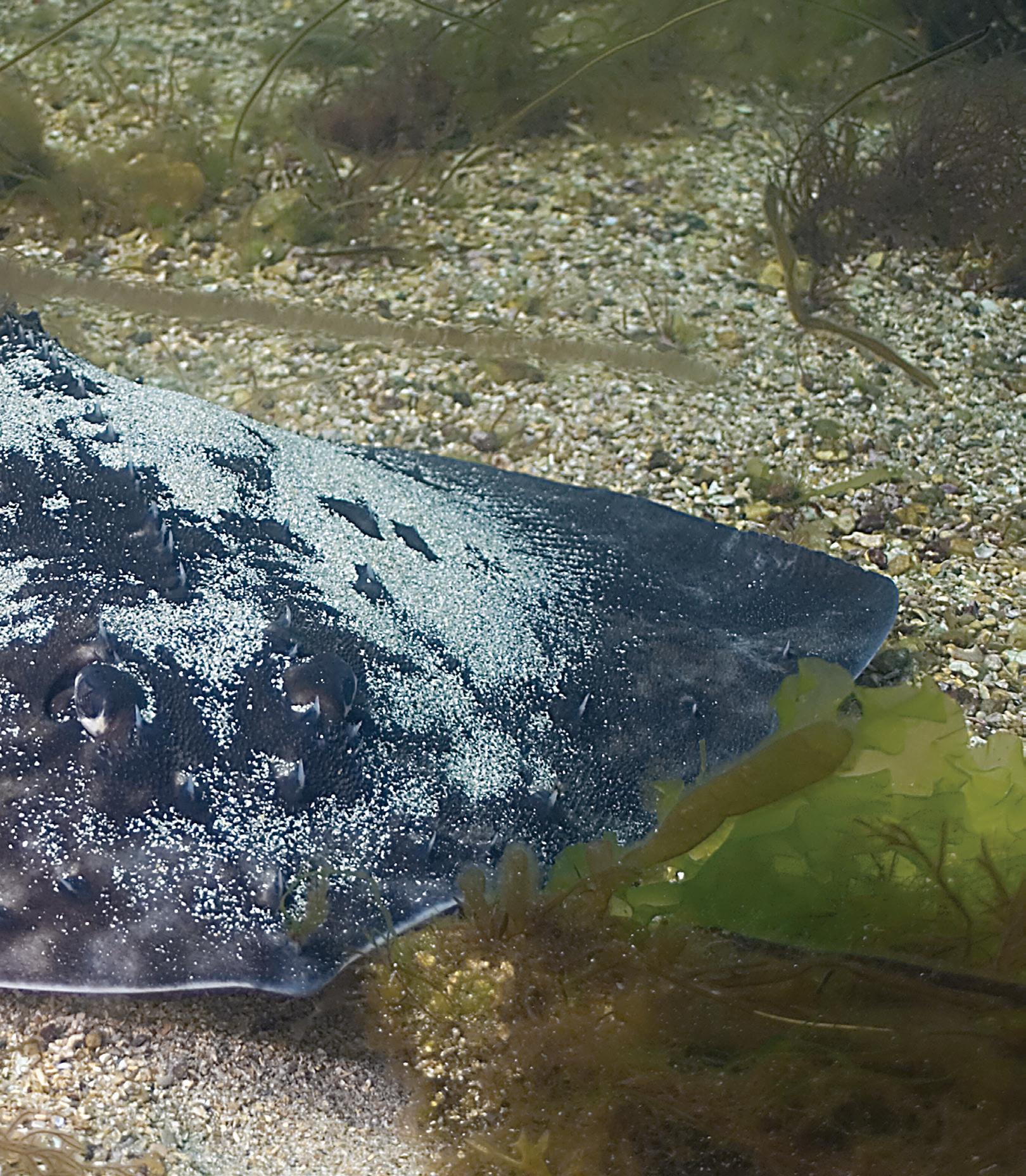
not rays! Rays give birth to live young and the thornback ‘ray’ lays eggs. Keep an eye out for their egg cases the next time you are at the beach! These have a rectangular leathery pouch or capsule which has four horns protruding from each corner. Thornback skates can lay up to 170 eggs per year (although the average is much lower at around 48-74) and the pups hatch from the egg cases after four-five months. If you find an eggcase make sure to be a citizen scientist and log your findings on The Ray Projects website (https://www. therayproject.org/). This information helps researchers get a better idea of where different species can be found and will help inform decisions on areas which need protected.
World Ocean Week is coming up and Fair Seas is holding a conference on June 8th in Cork City Hall to celebrate this. Ocean advocates, key stakeholders and members from industry and government will join together to map out the next steps for Marine Protected Areas in Ireland. Tickets to join us are on sale now on the Fair Seas website.

AREA OF INTEREST - DONEGAL TO SLIGO
The waters off the coast of Donegal and Sligo are some of the most productive waters in the world partly due to the Gulf Stream travelling up and across the Atlantic, bringing with it warm surface water and meeting with the cold currents coming down from the Arctic. People come from all over the world to see the wonders found in the waters here and they definitely don’t disappoint! It’s not only people that travel from around the world to see these waters, we also get plenty of animal visitors migrating through! One of the species found here is the Atlantic bluefin tuna, the biggest of all tuna species. Seeing this mighty fish in the water is a great privilege and there is a scientific tagging programme happening in Irish waters to gain more insight into the animal’s life history. We are still discovering new information about
this fish every year. The waters around Donegal also have their fair share of elasmobranchs with basking shark, tope, thornback ray, flapper skate and spurdog all found here. Huge pods of common dolphins can be seen along the coasts and if you are lucky enough you might catch a few waves surfing alongside these beautiful creatures! Due to the rugged and diverse coastline of Donegal, it is the perfect habitat for many species of seabirds which frequent our shores annually. To find out more and get an in depth look at the reasons why the waters around Donegal are so special, read Fair Seas ‘Revitalising our Seas’ report. This report brings together data from multiple sources and identifies 16 ‘areas of interest’ in the Irish maritime area which should be considered for Marine Protected Area (MPA) designation.
Irish Wildlife Summer '23 9 IWT NEWS
MARINE NEWS By Grace Carr
NORTHERN IRELAND LEAVING THE REPUBLIC BEHIND IN PROTECTING INSHORE WATERS
Bottom trawling is one of the most destructive shing methods there is and also one of the least selective, meaning it does not discriminate in what it catches. Huge nets, sometimes larger than the size of a football eld, are dragged along the sea oor destroying everything in its path while searching for a select few species. Vulnerable species get trapped in these nets and fragile ecosystems such as corals are destroyed. It would be as if we bulldozed through huge areas of forest just to harvest a few speci c types of fruit or nut and then discarded everything else that we had ripped up and destroyed. is type of shing method belongs nowhere near any Marine Protected Area (MPA) and if it is carried out within one then the area is not truly protected.
e Irish Wildlife Trust was delighted to see that new sheries management measures were enacted in Northern Ireland which prohibits bottom trawling in nine inshore MPAs. Unfortunately, this also highlights how far behind we are in the Republic. A ban on vessels over 18 metres trawling in the six nautical mile zone o our coasts was recently overturned in the courts allowing this devastating shing method to happen in some of our most vulnerable areas.
e ban originally came into e ect at the beginning of 2020 and was then overturned in October of that year.
ankfully, the ban was reinstated by Minister Charlie McConalogue in 2021 until this year when an appeal was won by two Munsterbased shermen. It has been overturned on a legal technicality that Ireland did not notify the UK and EU of these conservation measures as it would a ect non-Irish vessels. It is disheartening that the ban was li ed due to red tape and that the important habitats and species found in this area were not taken into consideration. Many inshore areas are nursery grounds for commercial and non-commercial species of sh. ese species are part of the basis of our food webs and many large
animals, such as tuna and whales rely on them. e loss of the trawling ban will have a major detrimental e ect to the entire marine food web. It’s hard to tell what the socio-economic outcomes will be but no doubt small scale local shermen will feel the e ects of this along with the eco tourism business.
e Northern Ireland Marine Task Force (NIMTF) and other key stakeholder groups such as the shing industry, have formed a coalition called ‘Co-Fish: NI Fisheries and Conservation Partnership’. is coalition will work on making sure conservation and management measures
indicators which need to achieve Good Environmental Status (GES) in order to have a fully healthy marine environment. Ireland has failed to hit GES for six of these 11 targets with three of these targets being ‘sea oor integrity’, ‘commercial sh and shell sh’ and ‘marine food webs’. 60% of Irish commercial sh stocks have ‘unknown’ status and so the precautionary principle must be applied as it is a standard case of ‘hope for the best, but prepare for the worst’. Allowing bottom trawling in the six nautical mile zone a ects all three of these indicators and ignores the precautionary principle to conservation.
such as the ban on bottom trawling will have the restorative bene ts needed in these areas, while also ensuring the protection of livelihoods for the people who depend on these waters to sh. Stakeholder engagement is vital for the success of protected areas and many NGOs including the Irish Wildlife Trust and Fair Seas have called for this to be included in the new Irish MPA Bill, due out this year.
e li ing of the trawling ban blatantly disregards the measures needed to be taken to hit our conservation targets in several EU legislations. e Marine Strategy Framework Directive (MSFD) has 11
e nine areas in Northern Ireland which will now prohibit bottom trawling include Marine Conservation Zones, Special Areas of Conservation (SACs) and Special Protected Areas (SPAs). Again, this highlights the lack of action in the Republic as Ireland is being taken to the EU Court of Justice for not designating and implementing site speci c conservation plans for its SACs and SPAs. We hope to see the Republic taking more progressive steps in the future to protect our inshore and o shore waters, such as enacting a strong and ambitious MPA bill this year, banning bottom trawling in protected areas and making sure protected areas have management plans in place so that they are not designated and le as ‘paper parks’.
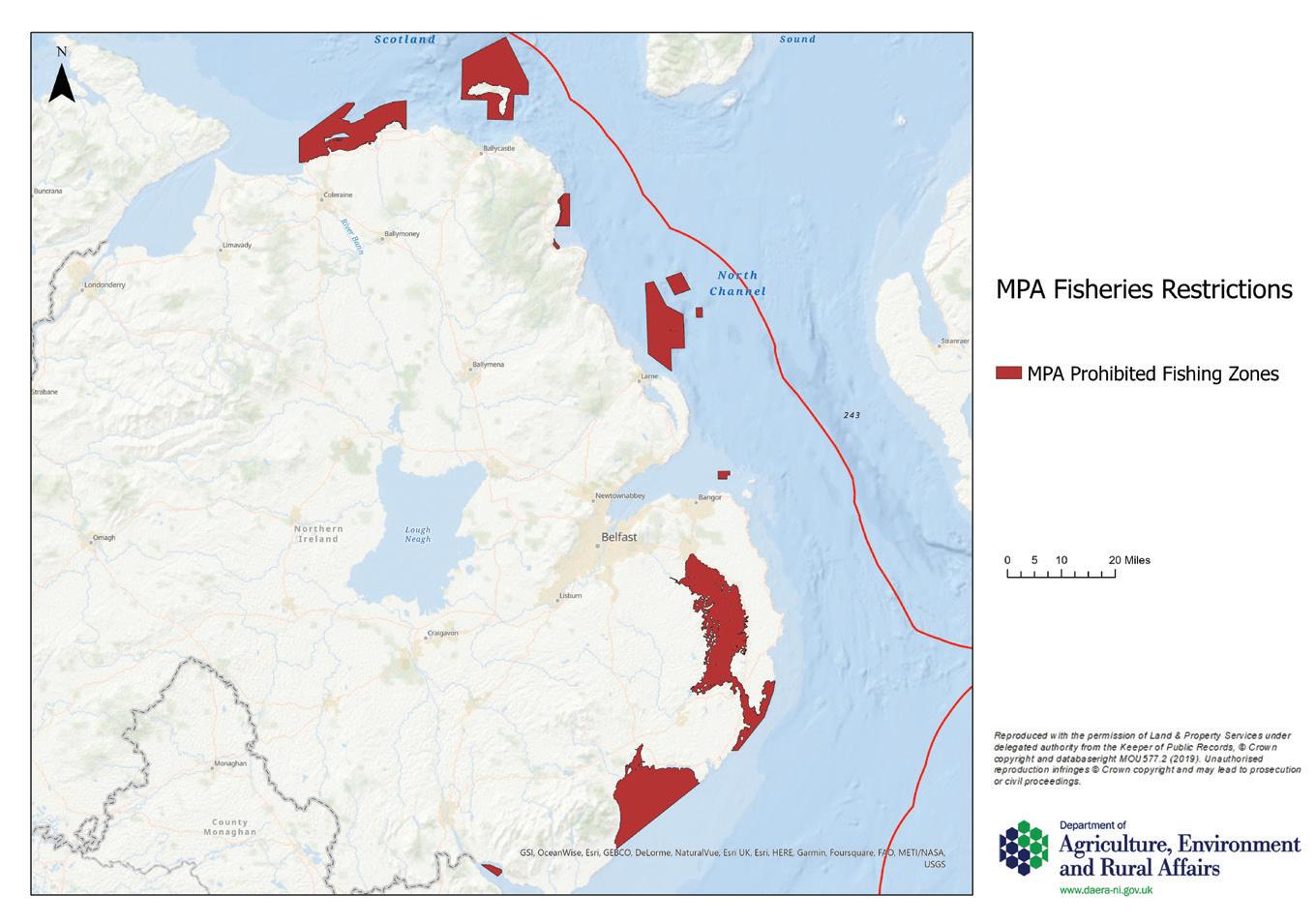
IWT NEWS
10 Irish Wildlife Summer '23
"MANY INSHORE AREAS ARE NURSERY GROUNDS FOR COMMERCIAL AND NONCOMMERCIAL SPECIES OF FISH"
ACTIVITY
UPDATE
By Kieran Flood, IWT Coordinator
Dublin says thanks to IWT with a Lord Mayor’s Award
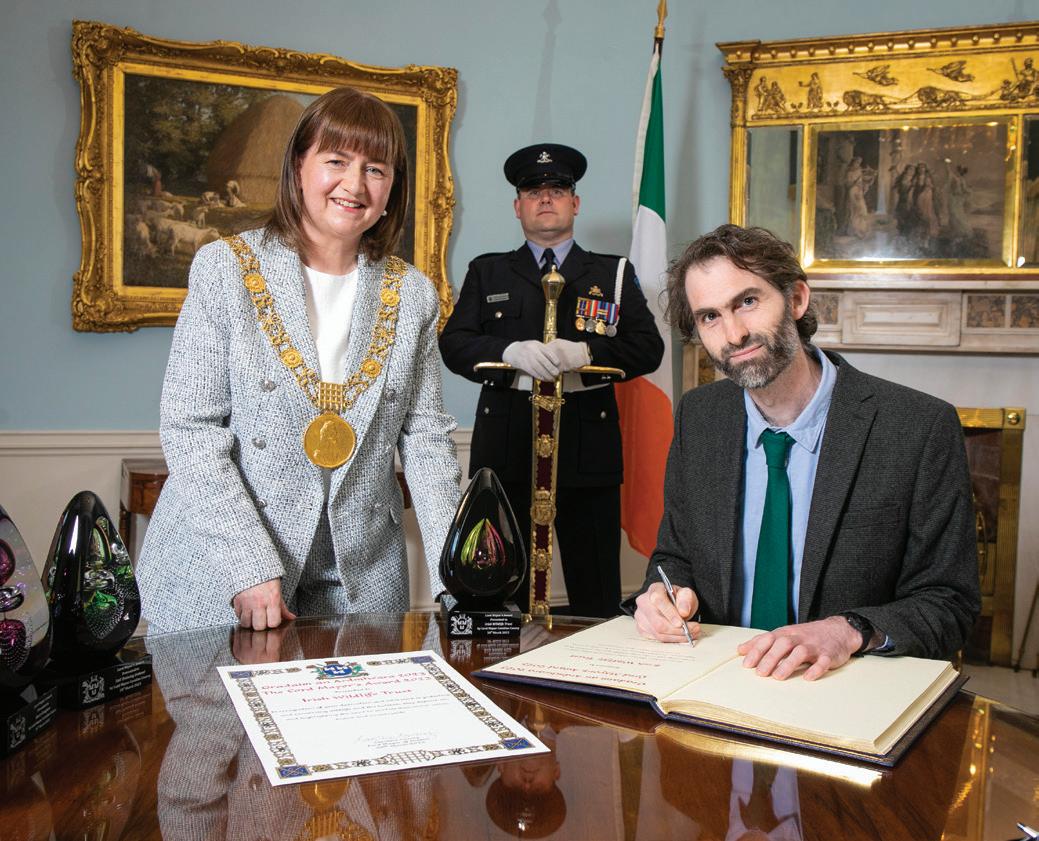
The Irish Wildlife Trust is honoured to have received a Lord Mayor’s Award in recognition of our work to help make Dublin a better place to live.

The Lord Mayor of Dublin, Caroline Conroy, presented three individuals and three organisations with a Lord Mayor’s Award at the reception in the Round Room at the Mansion House in Dublin this March. This annual award ceremony is an opportunity for the Lord Mayor to highlight and acknowledge achievements of both individuals and groups. We are delighted to be among the fantastic recipients of this year’s Lord Mayor’s Awards which include fellow environmental group An Taisce as well as actor Barry Keoghan.
We have a long tradition of engagement in Dublin City and we are honoured that the Lord Mayor of Dublin took this opportunity to recognise the positive impact the work of the Irish Wildlife Trust has on the citizens of Dublin and to thank us on behalf of the people of Dublin for our “contribution to this great city”. This high level of engagement in Dublin is thanks in particular to the work of our IWT Dublin Branch. Like all IWT branches our Dublin Branch is entirely voluntary run. A small committee of dedicated IWT members have been tirelessly organising free nature exploration events in Dublin every month of the year since the branch was reestablished in 2010.
Many Dubliners have joined us at events such as our annual visit to Phoenix Park for the deer rut, our trip to Bull Island to see the amazing orchids or our nature walks along the banks of Dublin’s rivers. Another contribution stemming from the Dublin branch is the Green Drinks monthly talks which take place in a city centre pub. Green Drinks is an opportunity for people to gather and listen to a talk on Irish wildlife followed by questions and answers and a friendly chat over a drink. Green Drinks has seen speakers cover everything from wolf reintroduction to bees to poplar trees. The event is a welcome opportunity to get out and meet other nature lovers and discuss the challenges and opportunities of nature protection in Ireland.
Details of all Dublin Branch events can be seen on our website and on their Facebook page or newsletter. You can find links to all these here iwt.ie/get-involved/our-branches/. If you are interested in joining the Dublin Branch committee then why not email them on dublinbranch@iwt.ie
The Irish Wildlife Trust exists thanks to the contribution of a
nationwide team of volunteers and a small, dedicated staff team. It is rare that one gets the opportunity to pause in recognition of work well done and that is just what this award has done. We would like to take this opportunity to thank all the volunteers that make the IWT possible as we continue to work to engage people with nature protection and restoration in towns, cities and villages across Ireland.
Award presentation Lord Mayor Caroline Conroy, Kieran Flood, Fabiola Vieira, Claire Walsh.
�Dublin Branch Rockpooling Event in Portmarnock
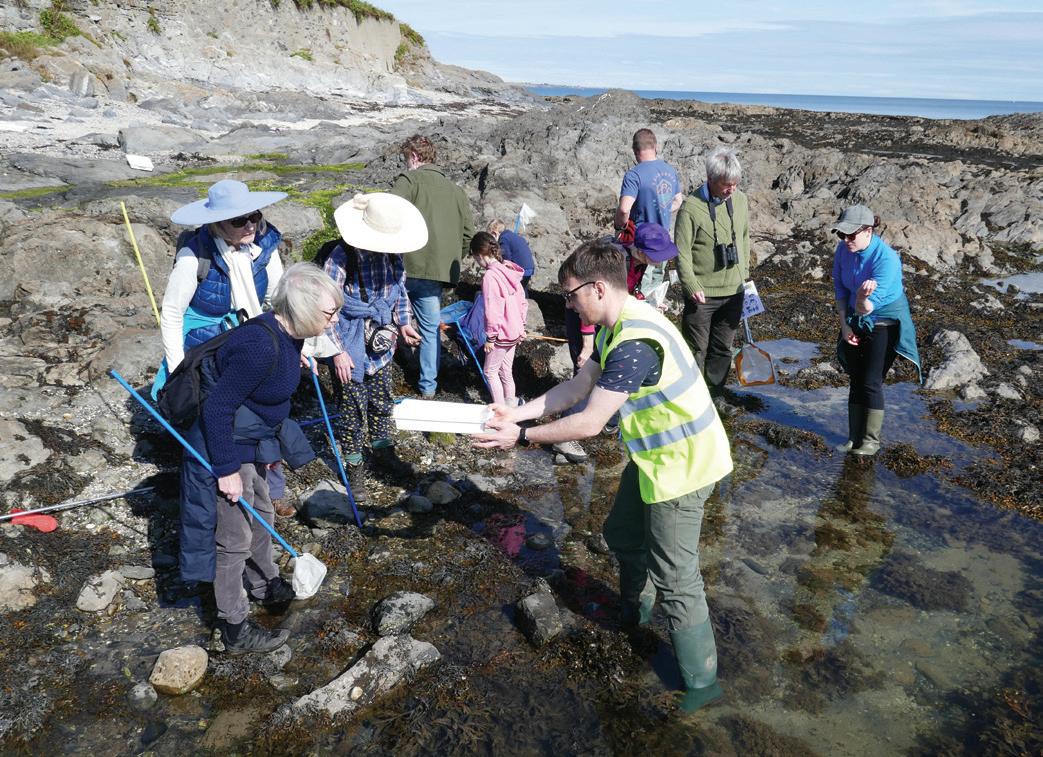
CONSERVATION NEWS Irish Wildlife Summer '23 11
�Kieran Flood IWT Coordinator signing the book of award. By Fennell Photography
By Fennell Photography
"THIS ANNUAL AWARD CEREMONY IS AN OPPORTUNITY FOR THE LORD MAYOR TO HIGHLIGHT AND ACKNOWLEDGE ACHIEVEMENTS OF BOTH INDIVIDUALS AND GROUPS"
By Pádraic Fogarty
Citizens’ Assemblies
The long-awaited report of the Citizens’ Assembly on Biodiversity Loss was published in April. The report contains 159 recommendations on how the State should respond to the biodiversity crisis including 73 that are ‘high level’ and 86 that are specific to sectors such as forestry, peatlands, water and the marine. These
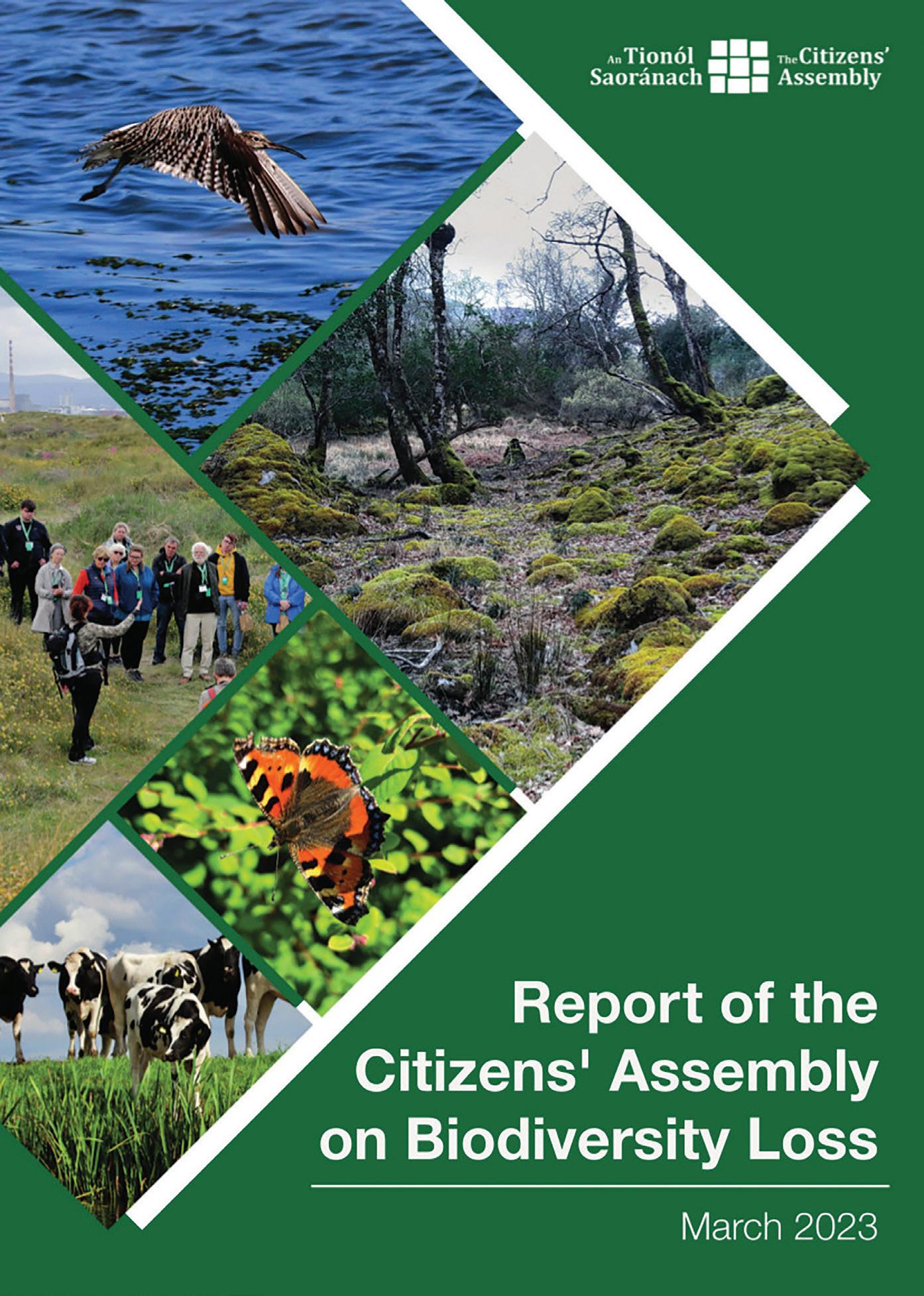
are the culmination of a year’s work and we want to thank the participating ‘citizens’, the members of the expert group and the chair, Aoibhinn Ní Shúilleabháín for their dedication and diligence. I’d recommend anyone with an interest in this subject to read the report which manages to be both powerful and quite

easy to read. The headline finding of the Assembly is that the State has failed abjectly to meet its responsibilities for the protection of nature. Ní Shúilleabháin said that there was a “fundamental disappointment in the capacity demonstrated by the State to coherently and deliberately tackle biodiversity loss” while the report says that “the Assembly believes that the State has comprehensively failed to adequately fund, implement and enforce existing national legislation, national policies, EU biodiversity-related laws and directives related to biodiversity”. This does not come as news to the Irish Wildlife Trust but it is significant that the Assembly should also arrive at this conclusion after such a thorough analysis. Yes, we all have a role to play in reversing biodiversity loss, but it is important that we realise that reversing biodiversity loss is not possible without active engagement, financing and leadership from the State. We know that many citizens, including farmers and fishers are keen to do what is needed but are frustrated when State agencies continue to fail to provide direction and supports. In the words of the Citizen’s Assembly: “This must change”.
Later in April, the report from the Children’s and Young People’s Assembly was published, a parallel gathering for under-18s. This is believed to be the first
IWT NEWS Irish Wildlife Summer '23 12
CAMPAIGN UPDATE
of its kind in the world and the young people, ranging in age from 7 to 17, noted that “policy choices made on nature and biodiversity today will profoundly affect children, young people and future generations across a wide range of issues, including soil fertility, water quality, flood mitigation, and climate mitigation and adaptation”. Their 58 recommendations looked at the themes of habitat loss, invasive species, climate change, pollution and over-exploitation. Their vision is an
“Ireland where we are connected to and care for the rights of nature (and each other) so that biodiversity is restored and protected and we live and grow up in healthy, clean and fair environments.”

Taken together, the two assemblies provide impetus, urgency and legitimacy to the growing calls for action on biodiversity. But will they have any impact? How will politicians respond? Will the recommendations be implemented? These are the questions we
are left pondering in the wake of the publication of these two reports. We have been promised committee hearings and ‘considered responses’ from political parties but it is clear to me that none of this will make progress without the sustained support of the wider population. Next year will see local and European elections, those who care about biodiversity need to mobilise to ensure that we get the politicians we need to make the difference.
Shannon Wilderness Park
The idea that a large tract of land near Lough Ree along the River Shannon in Co. Longford should be given back to nature is not new. Nearly 20 years ago, the local community envisaged that once the bogs had been worked out, State body Bord na Móna would give the land back to the people for the development of a ‘wilderness park’. The idea was fleshed out by local ecologist and historian John Feehan, who wrote a prospectus for it in 2002, which was then supported by Longford County Council. However, the project was never delivered. Bord na Móna chose instead to pursue a wind farm development on the cutover bogs, which was subsequently refused permission by An Bord Pleánala. The IWT was one of a number of groups who objected to this plan and thought that the refusal would allow for a pause and a move to support for the Wilderness Park idea, something that still garners wide local support.
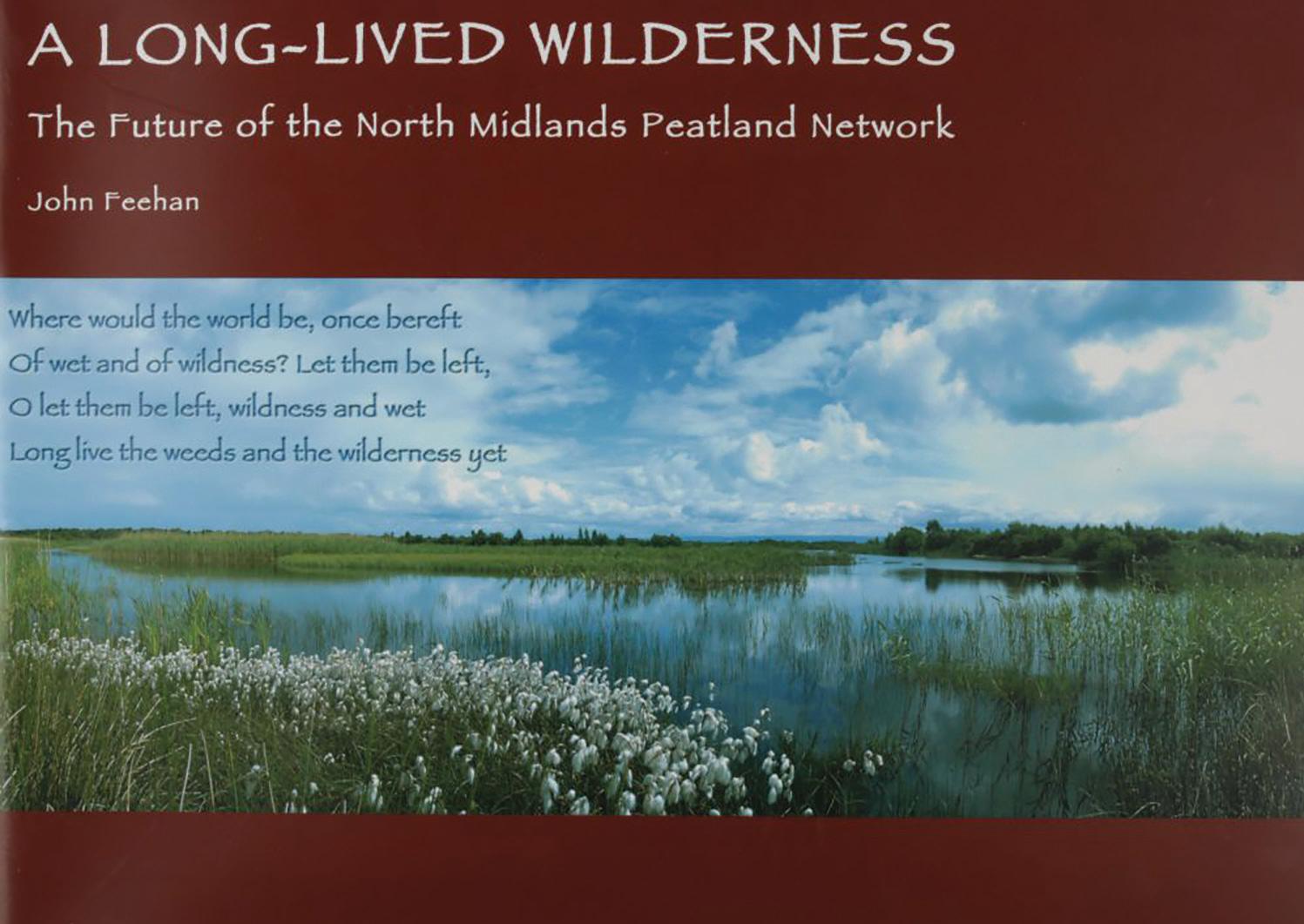
Instead however, Bord naMóna have continued to pump the bogs dry and have signalled their intention to resubmit a plan for wind turbines. The IWT has been working with local people, including politicians in the area, and we have yet to find anyone who is not in favour of the Wilderness Park. Longford County Council and the National Parks and Wildlife Service are pursuing UNESCO Biosphere status for the site but fundamental to this debate is that wind turbines are not compatible with biodiversity protection on these bogs. The turbines themselves would mean large birds, such as whooper swans, cranes or whitetailed eagles would avoid the area. The presence of turbines would also mean that the bogs would require on-going pumping to keep the land dry, something that will ensure continued release of greenhouse gases from the degrading peat, pollution of the River Shannon and – at best – a flora and fauna that would be severely limited.
In March the IWT held an event at the Corlea Trackway Centre in Longford where we heard from the local wildlife
ranger,
Life in Scotland and is involved in the Affric Highlands Rewilding Europe project. He told us how rewilding is not only good for nature and climate but is good for local people, through the creation of job opportunities and small-scale economic opportunities. In April, we put our case to Minister Eamon Ryan, who was visiting Longford, and who has the authority to instruct Bord na Móna to put aside plans for a wind farm and instead deliver on its promise for a Shannon Wilderness Park. With local and national elections coming up in 2024 and 2025, we will be working to make this an election issue in the Longford area.
IWT NEWS Irish Wildlife Summer '23 13
Sue Moles, about the collapse of bird populations in the area, and from Alan McDonnell who works for Trees for
Meeting Minister Eamon Ryan and the Green Party's Catherine Joseph
NATURE RESTORATION bogged down by misinformation
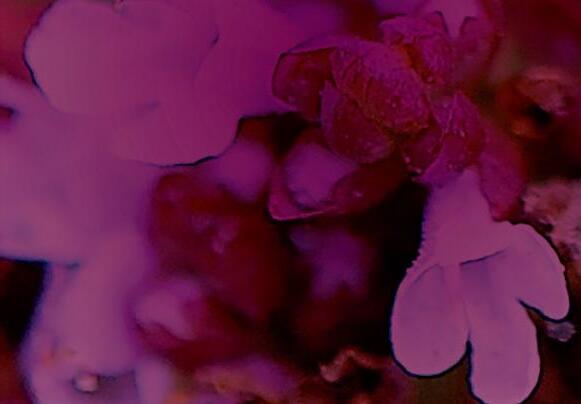
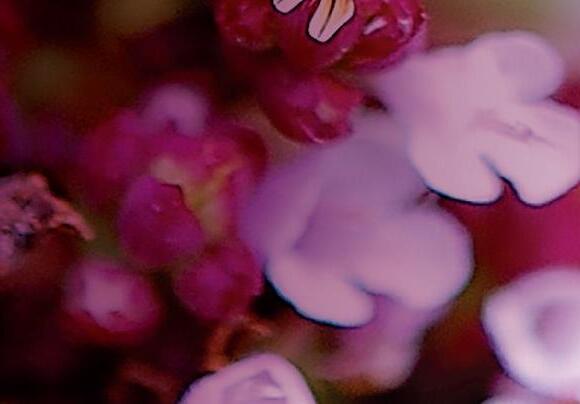
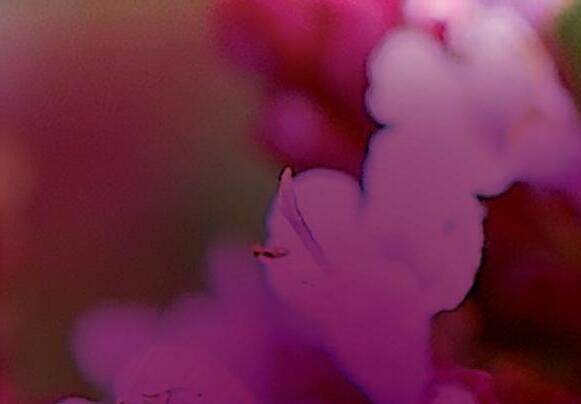

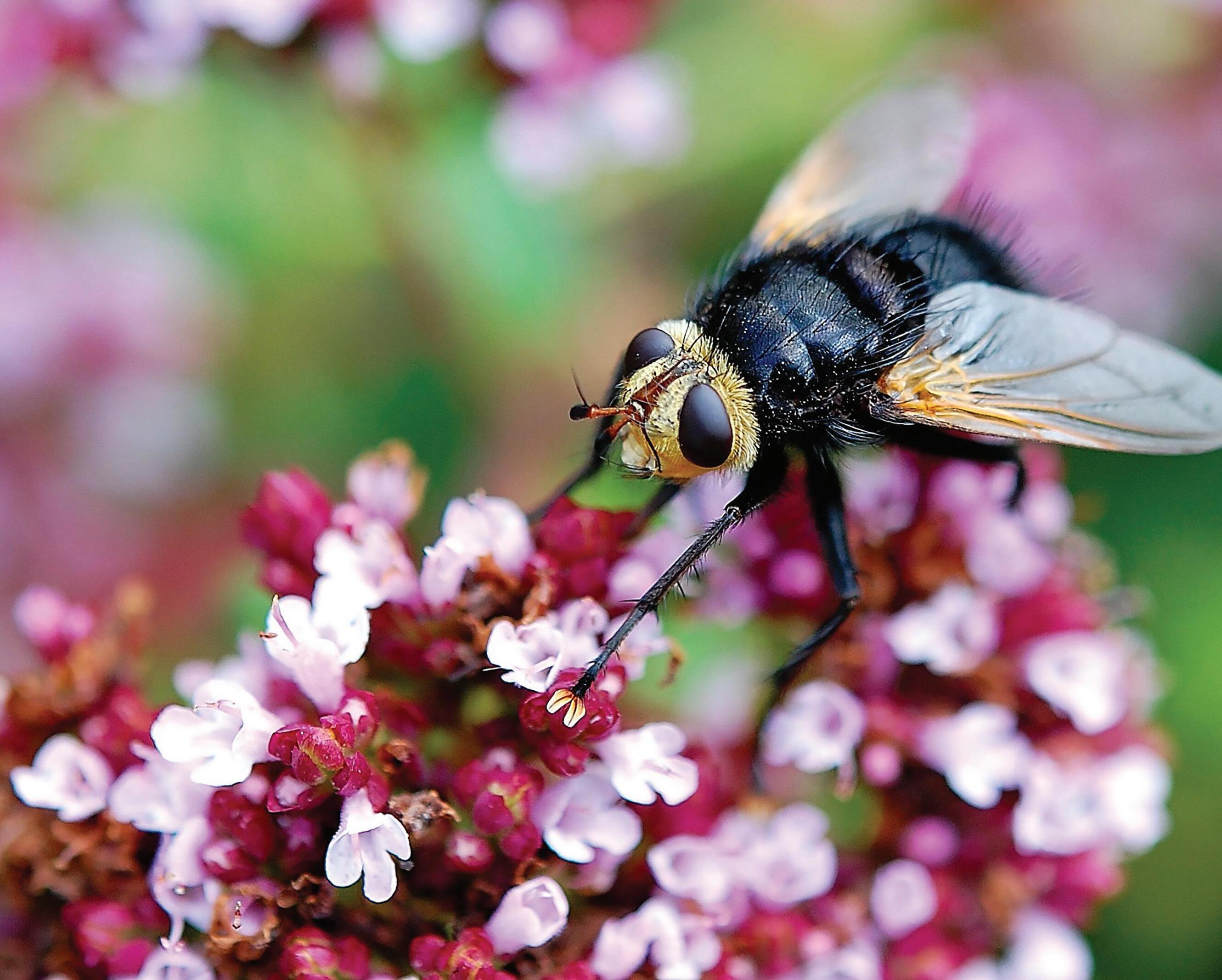 BY FINTAN KELLY , AGRICULTURE AND LAND USE POLICY AND ADVOCACY OFFICER AT THE ENVIRONMENTAL PILLAR
BY FINTAN KELLY , AGRICULTURE AND LAND USE POLICY AND ADVOCACY OFFICER AT THE ENVIRONMENTAL PILLAR


Last summer the European Commission adopted their proposal for a Nature Restoration Law (NRL). is proposes to restore ecosystems across the continent as one of the keystones of the EU’s Biodiversity Strategy. e dra law is arguably the most ambitious piece of nature legislation to come out of Brussels since the adoption of the Habitats Directive thirty years ago. It is a patchwork of targets designed to address the shortcomings in the existing framework of environmental laws and expand the scope of nature restoration outside of protected areas across farmland, forestry and into the heart of our cities.
While the Birds and Habitats Directives have laid the groundwork to restore the conservation status of a range of threatened habitats and species, the absence of incremental targets and timelines have allowed countries like Ireland to ddle while nature burns.
e scale of this wilful neglect is staggering with open court cases against Ireland over the failure to designate 217 Special Areas of Conservation and for failing to adopt conservation measures for 230 out of 423 sites. e NRL intends to address this implementation gap by establishing restoration targets and timelines for habitats and species already protected under law.
e NRL also proposes to expand protection to a range of new habitats and species. is is particularly important in the marine environment where very few species are protected. e NRL will require that restoration measures cover at least 20% of the EU’s land and sea by 2030 and all ecosystems in need of restoration by 2050. Other standout targets included the restoration of pollinator and bird populations, the removal of
IWT NEWS Irish Wildlife Summer '23 14 CAMPAIGN UPDATE
IRELAND’S OPPOSITION TO THE EU NATURE RESTORATION LAW EXPOSES THE UNHEALTHY ROLE THAT MISINFORMATION CONTINUES TO PLAY IN NATIONAL POLITICS
barriers to fish migration and the need to increase urban green space. The transparency around all of this will be ensured by an implementation framework which will require detailed national restoration plans, monitoring and access to justice provisions. The NRL also recognises the interconnected nature of biodiversity loss and climate change and the threat that both pose to food security and economic stability. With this in mind the restoration of ecosystems that play an important role in the capture and storage of carbon such as wetlands, woodlands and seagrass meadows has been given particular attention. Peatland’s are the most important terrestrial ecosystem on the planet when it comes to storing carbon and therefore there are specific targets for the restoration of degraded peatlands and peat soils. These targets are pertinent to Ireland as we have proportionally one of the greatest peatland areas in Europe (ca. 20% of the land surface). We also have one of the worst records in the world when it comes to peatland and wetland loss having lost over 90% in the last 300 years. 75% of Irish peatlands are not functioning hydrologically or ecologically and biodiversity has suffered immensely. Although the scale of what we have lost is difficult to fathom what remains is incredibly precious with Ireland hosting 60% of Europe’s raised bog habitat.
While healthy peatlands are an ally in our efforts to fight climate change drainage converts them into a major liability. Grasslands on drained peat are the largest net source of emissions within our land use sector, while degraded peatlands, including afforested peatlands are also major sources of emissions. According to the Environmental Protection Agency substantial peatland restoration and rewetting of up to 90% of drained organic soils will be needed to deliver net-zero emissions within the Agriculture and Land Use sectors by 2050. There has understandably been concern around the implications of rewetting farmland but in reality the NRL does not require farmland to be restored to a wetland; it simply requires that management is improved so that emissions are reduced. Research has shown that every 10cm rise in water table could deliver the equivalent of at least three tonnes of CO 2 per hectare per year, without necessarily halting farming activities. Despite this, various rural independent TDs and farming representatives have been scaremongering, claiming that the NRL will mean an end to farming on peat. Perhaps not coincidentally Ireland is one

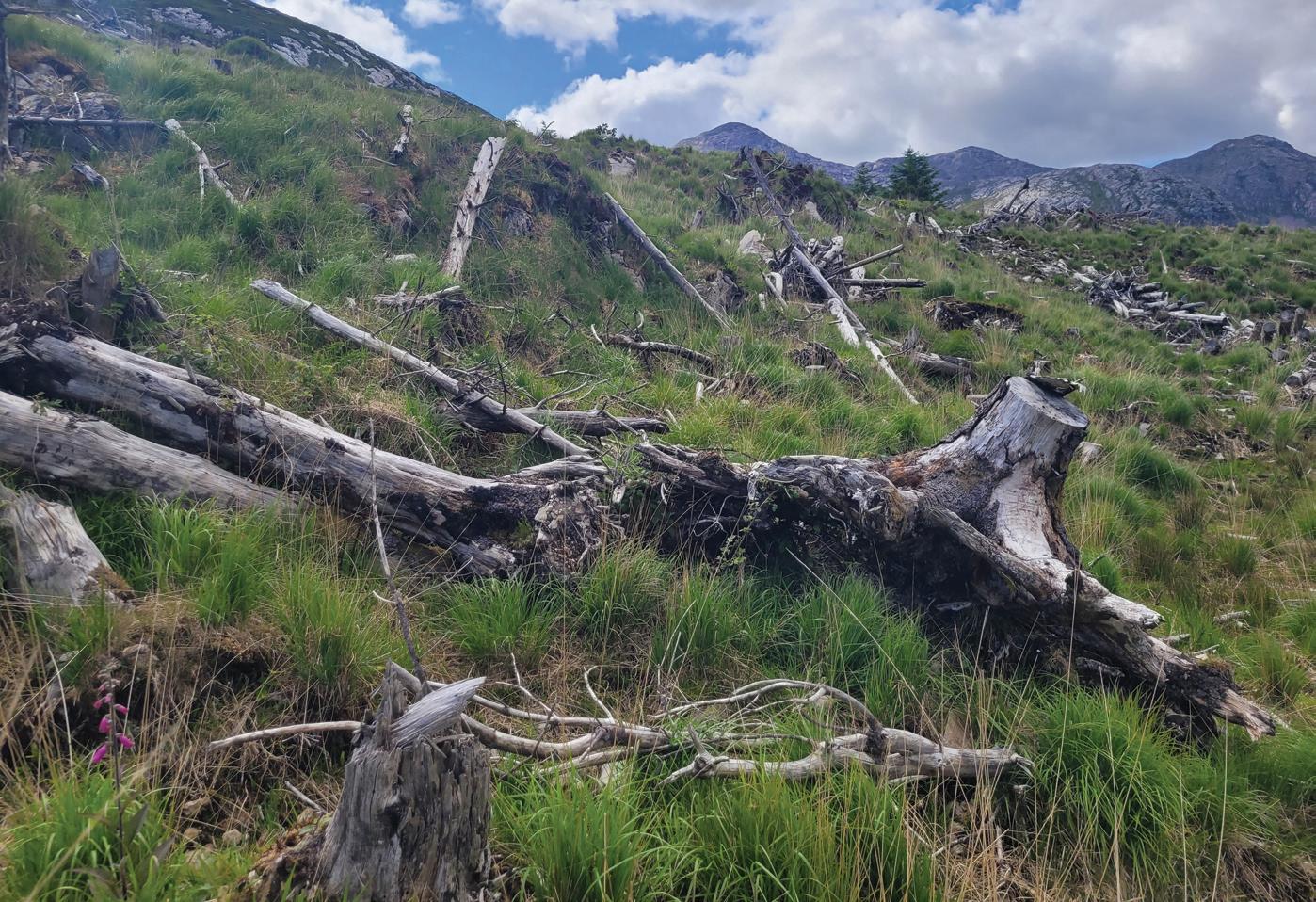
of the Member States that is most strongly opposed to the peat targets on the grounds that they are too onerous. This is deeply frustrating because actually the proposed targets within the NRL are less ambitious than existing national targets. For instance, the NRL proposes that 7.5% of organic soils in agricultural use be rewetted to some degree by 2030 while Ireland’s Climate Action Plan 2023 has a 24% rewetting target. While greater clarity is needed on how restoration will be financed, the NRL is a major opportunity to garner EU support for our existing national commitments.
Irish leaders must work to increase the scope and ambition of the NRL during ongoing negotiations. The challenge is to improve peatland management as a nature-based solution to biodiversity loss and climate change, all the while supporting the wellbeing of rural communities. It is essential that farmers are central in shaping and driving any measures that are developed and that they are rewarded for the public goods they provide. At a time when we are asking more of private landowners it is also critically important that the State is seen to lead from the front. To this end Coillte and Bord Na Móna, who manage 7% and 1% respectively of Ireland’s land and are the State’s largest peatland landowners must lead from the front and deliver ambitious nature restoration at scale.
IWT NEWS Irish Wildlife Summer '23 15
Fintan Kelly
Peatlands damaged by failed forestry need to be restored
"PEATLAND’S ARE THE MOST IMPORTANT TERRESTRIAL ECOSYSTEM ON THE PLANET WHEN IT COMES TO STORING CARBON AND THEREFORE THERE ARE SPECIFIC TARGETS FOR THE RESTORATION OF DEGRADED PEATLANDS AND PEAT SOILS"
The Nature Restoration Law includes targets for pollinating insects
Basking Sharks Are Back:

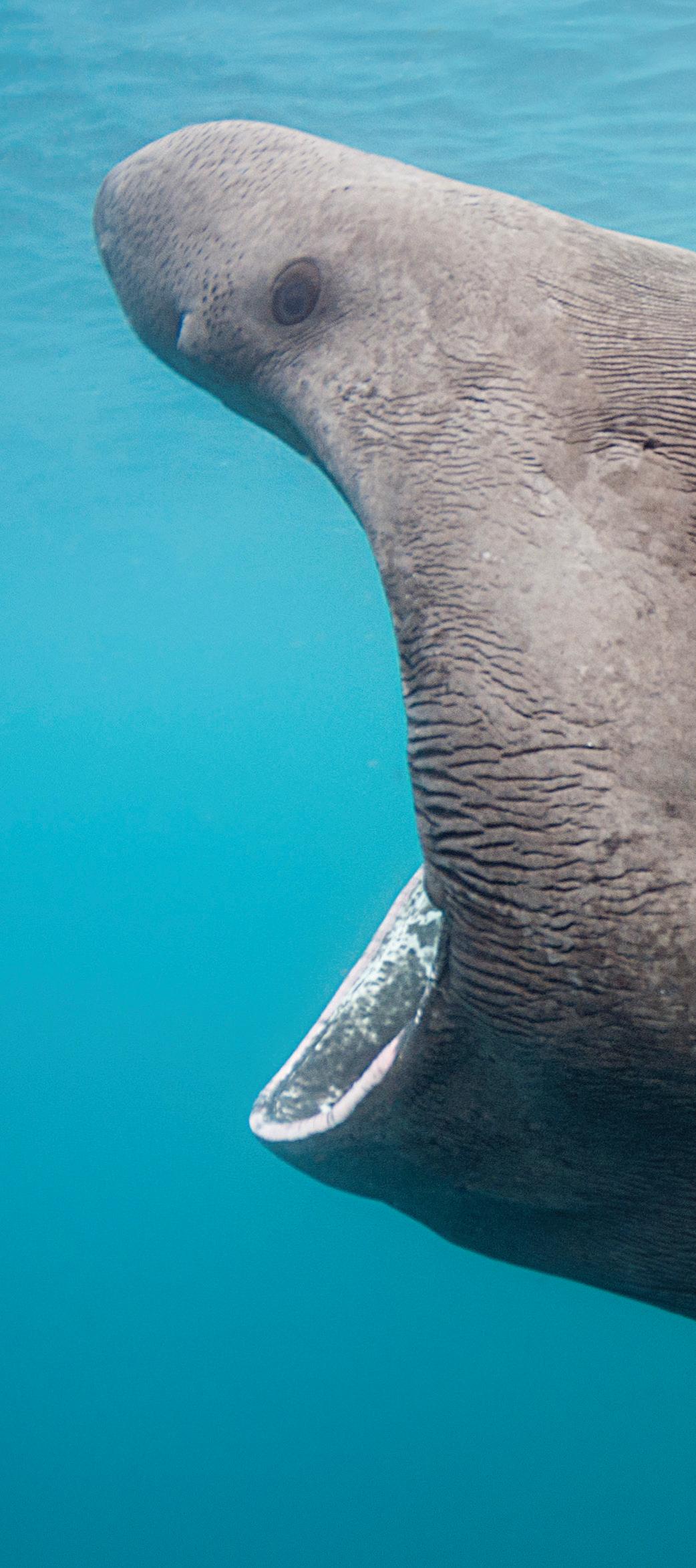
The Beautiful Timing of Nature
BY DONAL GRIFFIN
The sight, sound and smells of nature are wonderous things to behold. Even the feel of nature at our fingertips or under our feet are gifts in their own right. Such is the beauty and power of nature over our disposition, it can help change the course of our daily lives and even our health for the better.
Thankfully, the wealth of personal and societal benefits of being in, next to, or having regular access to nature are being acknowledged and valued more and more. The Covid-19 pandemic and resultant lockdowns here in Ireland, which saw a monumental shift and restriction of people’s movements, also sparked a profound, and for many people new, appreciation for the trees, insects and wildlife in our gardens, woodland walks and nearby rocky shores. We collectively realised, or re-discovered, the smile to be had in every owl hoot, buzzing bee, and pulsing jellyfish, if only we take the time to look.
What we don’t hear about as much however, is the amazing and awe inspiring timing of nature. Be it the comforting constant of the dawn chorus performed by countless birds commencing their day, or the daily vertical migration of plankton in our ocean from deeper waters in the daytime to shallower surface waters at night, nature’s timing is rhythmic and serene.
The good timing of nature is not only beautiful, but necessary for its own success. For example, the precise timing of natural events such as fish spawning and the blooming and growth of prey organisms which those fish rely on to survive has been fine-tuned for thousands of years. Even small changes to the sequencing of intricate interactions can have disastrous results especially for already degraded and declining habitats and species.
With respect to one fish however, its timing yet again has been impeccable. Basking sharks, Ireland’s biggest fish and the second biggest fish in the ocean, as it has done every year for at least the past few decades, have once again appeared off the Irish coast in big numbers just as the first
FEATURE Irish Wildlife Summer '23 16
"THE PRECISE TIMING OF NATURAL EVENTS SUCH AS FISH SPAWNING AND THE BLOOMING AND GROWTH OF PREY ORGANISMS WHICH THOSE FISH RELY ON TO SURVIVE HAS BEEN FINE-TUNED FOR THOUSANDS OF YEARS"
hint of sun and summer appears on the horizon. We are privileged that these extraordinary animals show up in our coastal waters year after year. With past records showing 70, 80, sometimes over 100 individuals gathered in the same area at a time, Ireland is undoubtedly an important hot spot for these globally threatened species.
In the past few weeks, social media has been awash with video clips and photos of the first basking shark sightings of the year along our coast. The size of their huge black dorsal fin alone can be telling - you are lucky enough to be witnessing a basking shark going about its day. Basking sharks swim slowly near the surface, usually with their enormous mouths open, sieving the water for nutrient rich plankton to eat. So, if the diagnostic shark fin isn’t enough, the familiar sight of a large open mouth and bright white gill rakers is all the confirmation you need.
PROTECTING OUR GENTLE GIANTS
For basking sharks, as is the case for many highly mobile marine species which migrate large distances and travel between different national jurisdictions on a regular or sometimes even daily basis, the way in which we care for and protect them at home has consequences far beyond our own borders.
The Irish Basking Shark Group (IBSG) is a small, voluntary led conservation group working on the island of Ireland for over 15 years. After a long fought campaign, championed by Jennifer Whitmore TD in Dáil Éireann, on the 3rd

FEATURE Irish Wildlife Summer '23 17
Basking shark. By Doug Perine
October 2022, the Minister of State for Heritage and Electoral Reform Malcolm Noonan, alongside Minister for Agriculture, Food and the Marine Charlie McConalogue, added the basking shark to the list of protected species under Section 23 of the Wildlife Act. Basking sharks now enjoy legal protection in Irish waters from hunting (unless under permission or license), injury and willful destruction of their breeding and resting places.
Unfortunately, during the summer when the sharks are close to shore, unintentional harassment and disturbance of basking sharks is a growing problem. Making these types of disruptive and harassing behavior towards basking sharks illegal is a huge conservation win for one of Ireland’s most charismatic species. At the time, as one of the IBSG campaigners I was keen to highlight that while the legislative change had been many years in the making, we were delighted to finally see it happen, especially given that estimates suggest that Irish waters host in the range of 1020% of the global population of this shark species yearround.
In my view, and the view of over 13,000 supporters across Ireland and internationally who signed the IBSG’s online campaign petition, it is Ireland’s duty to do all we can to protect basking sharks while they are feeding and courting in Irish waters and are under our charge. This is why legal protection is so necessary; because it makes the disturbance and harassment of basking sharks against the law. However, we shouldn’t lose sight of the other hugely positive potential of the legislative change.
Firstly, the announcement from the Government also included the development of a statutory basking shark Code Of Conduct for water users who encounter basking sharks, be that swimmers, water craft operators or divers. As was pointed out to the Government and to the IBSG campaign at the time of the announcement last year, enforcement of the legal protection of basking sharks on the water in real time to instances of harassment or wildlife interference is extremely difficult. While that is undeniably true, the change in law puts an onus on societal education and awareness raising of the issue, and redirects attitudes and behaviours towards conversations and actions on how such undesirable instances can be avoided. A statutory Code of Conduct will go a long way to elevate the status of this fish species to ‘wildlife’ in the eyes of the public, and as animals deserving of our protection and conservation efforts.
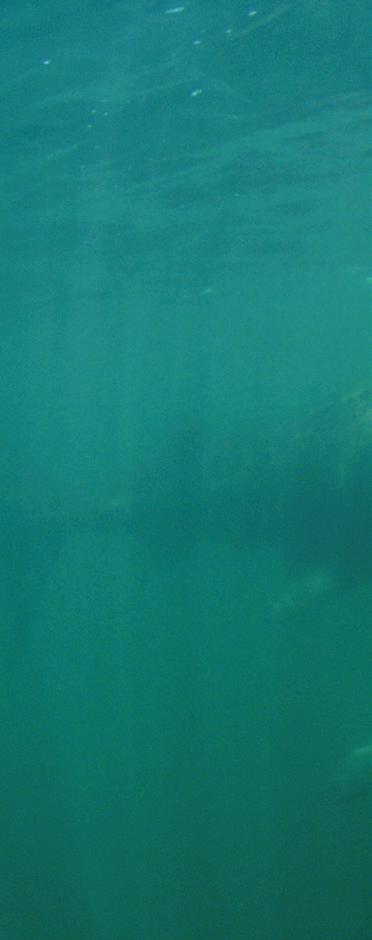
This point is equally true in the eyes of the Government, which brings us to the next, less well known, but equally positive consequence of the legislative change. The Irish Government must treat basking sharks as ‘wildlife’, and for the first time it now has a national statutory imperative, as well as a moral obligation to conserve the species against threats and risks to its survival at an individual as well as at a population level. This is particularly important given the Government are also drafting new Marine Protected Area (MPA) legislation which will allow it to designate new conservation areas to protect nationally important species, habitats
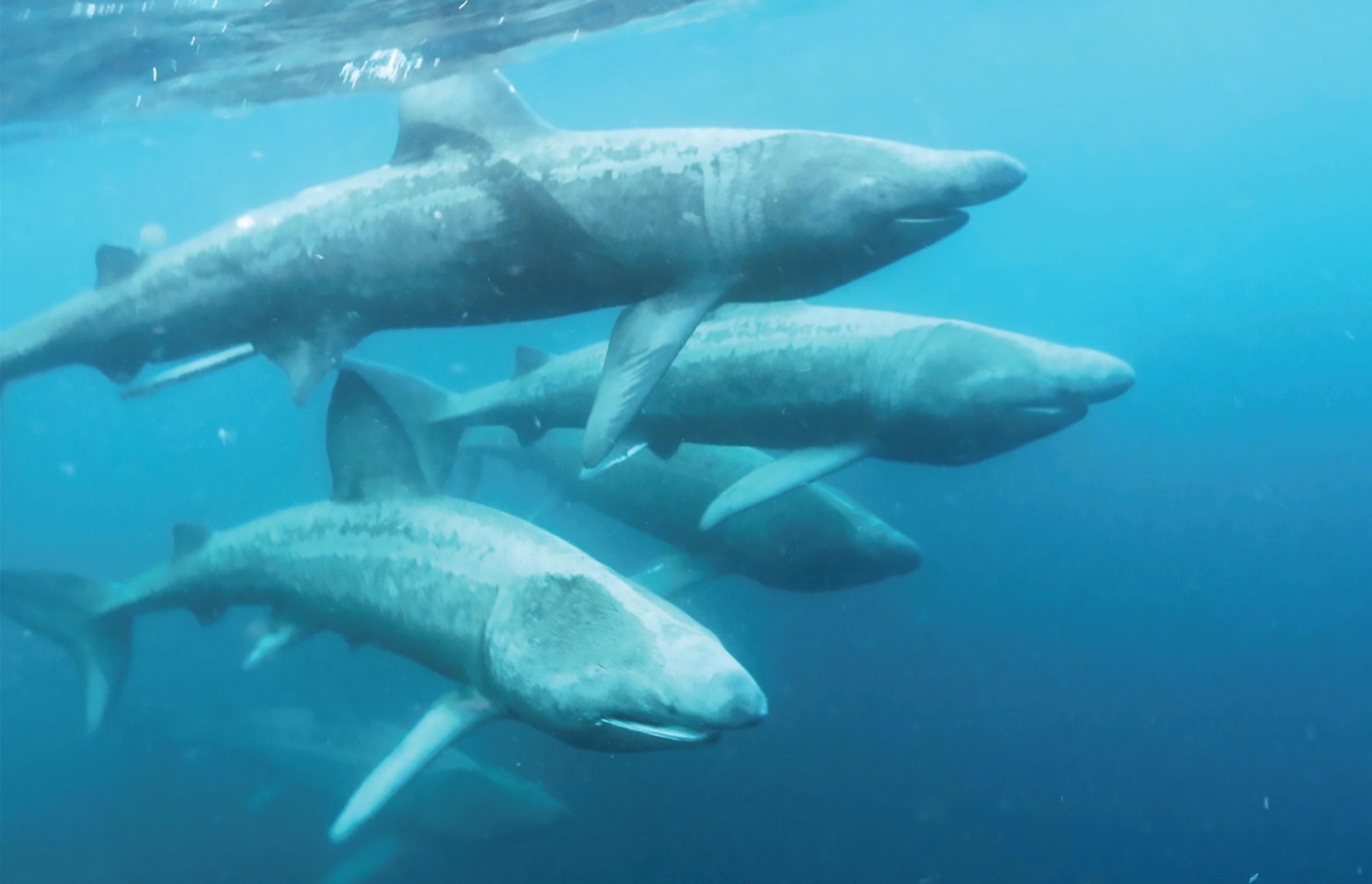
Irish Wildlife Summer '23 18
"A STATUTORY CODE OF CONDUCT WILL GO A LONG WAY TO ELEVATE THE STATUS OF THIS FISH SPECIES TO ‘WILDLIFE’ IN THE EYES OF THE PUBLIC, AND AS ANIMALS DESERVING OF OUR PROTECTION AND CONSERVATION EFFORTS"
Basking sharks exhibiting ‘torus’ behaviour
By Sea Fever Productions
and ecosystem processes. As it is now listed as a protected species, basking sharks will now undoubtedly be a feature of the resulting MPA network emerging from the new legislation when it is enacted hopefully later this year. In time, this will likely bring about more and more effective conservation and protective management measures in Irish waters for basking sharks. This is why last October, the IBSG made it clear that the announcement from minsters Noonan and McConalogue didn’t herald the end of the group’s campaign to conserve and protect basking sharks in Irish waters, rather it was simply the beginning of the next chapter.
Lastly, the inclusion of the first marine fish species in the Wildlife Act opens the door for other endangered shark and fish species to benefit from conservation specific legislation. The International Union for Conservation of Nature (IUCN) Red List highlights that one third of all known species of sharks and their relatives are considered threatened with extinction. Ireland, as an island nation, is host to many such species with several listed as critically endangered or endangered globally and which are resident in Irish waters. Now with basking shark being the first marine fish species to be added to the protected list, there is no reason not to add other equally, or even more deserving species.
TIMING OF PROTECTING NATURE
One of the well documented dangers of the climate change crisis is the shift in the distribution of species poleward from ever warming seas, but just as problematic is the shift and potential mis-match in the sequence of important and interlinked ecological events. Similarly, the ways in which we protect nature can also be intricate, complex and dependent on the timing of multiple other factors. This is the first ‘basking shark season’ in Ireland in which the individual animals that occur in our waters enjoy the benefits of legal protection. I sincerely hope, this protection translates into less disturbance
Ireland has become a hub of cutting edge and novel basking shark research as well as shark research more broadly. This is a reflection from wildlife & creative documentary filmmaker, author and ocean educator and conservationist Ken O’Sullivan on his quest to find large whales and shoals of fish.
I spent ten years trying to find the fertile areas of our ocean. Hundreds of days at sea trying to find large whales and shoals of fish, until eventually thanks to the help of planktonologist Dr. Cillian Roden, I figured out what a coastal front is and crucially where to find them. The results were encounters with huge shoals of bait fish, with humpback and Minke whales, hundreds of common dolphins and thousands of seabirds all gathering to feed on this bounty. Possibly our greatest discovery though was encountering 18 adult basking sharks engaged in a circling behaviour that I would later discover was called a torus, a donut shaped entity. Though the waters were thick with plankton, none of the sharks were feeding, the first time I had ever seen a basking shark with its mouth closed. I contacted David Sims, a world expert on the species, and he replied almost immediately that this was the first time this behaviour had been confirmed anywhere in the world. Although it had been seen from the air in Canada in 1998 and also by shark hunters off Cornwall in the 1950s, this was the first time anyone had documentwed the behaviour in the water where I was able to identify an even match of males and females.

David proposed a research paper and I contacted a number of other scientists and asked them to work with him, the result of which was our published paper in 2022. I hope this may have contributed towards education and awareness of the species and their vulnerability, and towards the Government eventually gave basking sharks legal protection in late 2022.
By Ken O’Sullivan
and harassment events over the coming months. However, the bigger picture potential for greater and further conservation victories off the back of this seemingly small policy change is also cause for hope and ocean optimism.
It occurs to me that the legal protection of Ireland’s largest fish, their inclusion into Ireland’s soon to be expanded MPA network, and the development of a statutory Code of Conduct is a strong foundation for national basking shark conservation strategy. The timing may be just right!

FEATURE Irish Wildlife Summer '23 19
"THIS IS THE FIRST ‘BASKING SHARK SEASON’ IN IRELAND IN WHICH THE INDIVIDUAL ANIMALS THAT OCCUR IN OUR WATERS ENJOY THE BENEFITS OF LEGAL PROTECTION"
Donal Griffin is the Marine Policy Officer with Fair Seas. See www.fairseas.ie
Basking sharks. By Sea Fever Productions
Our Gorgeous
BY DR MARIA LONG , NATIONAL PARKS AND WILDLIFE SERVICE
Grasslands
Recently published results from the hugely impressive and comprehensive BSBI (see box) Plant Atlas 2020 underline that our semi-natural grasslands, places that harbour the most biodiverse plant communities on this island, are undergoing huge declines, and so are the plants they support. We can be sure that the fate of all the countless invertebrates, and all the creatures large and small that rely on them, are decreasing too.
‘Semi-natural’ grasslands are so-called because in Ireland, all grasslands need management of

some sort, so they cannot technically be called ‘natural’ (natural grasslands exist in Africa, North America, Mongolia, etc., where the climate and other factors preclude dense tree cover). Don’t be fooled by the name however, because semi-natural grasslands have been here for thousands of years and have evolved in this landscape to support a huge range of plants and animals that would struggle or be lost entirely without them. Many species of plant and animal are totally reliant on these open habitats, or the edges between open and wooded habitats, for their survival.
I often say that semi-natural grasslands are invisible. But surely, you might say, grasslands are everywhere in Ireland? The ’40 shades of green’ are part of how we define ourselves, right? The trouble is – it’s not always readily apparent that some grasslands are different to others. For example, some fields are uniform and shiny green, having been reseeded with perennial ryegrass and fed by artificial fertiliser. These are powerful for production of food (but with environmental costs).
The Botanical Society of Britain and Ireland (BSBI) earlier this year published Plant Atlas 2020, the results of 20 years of field work and 2.85 million plant records for Ireland. The news for our native plants was not good, with many native plant species suffering a “significant decline in range or frequency” and alien species for the first time outnumbering natives.
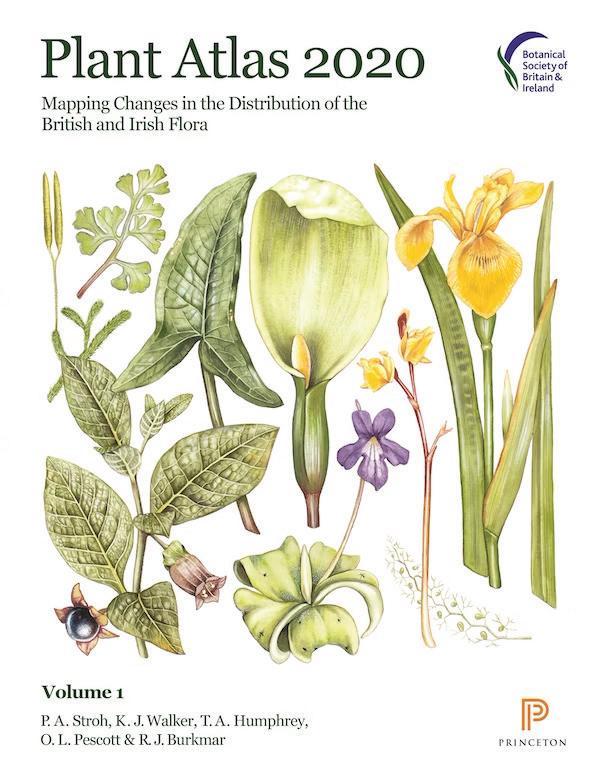
See https://bsbi.org/plant-atlas-2020-in-ireland
Perhaps at the other end of the spectrum, one might see a lumpy field, with rocks outcropping and untidy
Irish Wildlife
20
Summer ‘23
WILD IDEAS
Species-rich grassland in Co. Galway
vegetation. This might be important for biodiversity and/or carbon capture and/or flood attenuation, etc. Both might be cleared/ploughed next year. Would anyone notice? Would anyone call the Gardaí or National Parks and Wildlife Service (NPWS)? Probably not! By contrast, if someone destroyed a native woodland, there would certainly be outcry. But the semi-natural grassland could be just as important – it may be as diverse, as rich in plants, animals and fungi as a broadleaved woodland. If it’s a floodplain grassland, it may capture and store more carbon than a broadleaved woodland! It may have formed over 100s, perhaps 1,000s of years, and be no less of a loss. However, it may be lost under the plough (or other threat) without so much as the batting of an eyelid.
These treasures, often hidden in plain sight (did you know that some of us have lawns that may be pockets of ancient grassland!?), are being lost at a staggering rate. NPWS carries out detailed monitoring of over 100 of our best seminatural grassland sites every six years. The current survey will finish in 2024. The results of the previous work showed that 28% of hay meadows and 31% of calcareous (i.e. lime-rich) grasslands had been lost since the previous survey, approximately six years before. This level of loss is devastating, and underlines why these sometimes invisible habitats are amongst the most endangered in Ireland.
All semi-natural grasslands require ongoing management. So loss comes, perhaps counterintuitively, from abandonment as much as from inappropriate management or land-use change. The NPWS monitoring confirms that abandonment is as much of a threat and cause of loss of habitat for semi-natural grasslands as is ploughing, reseeding, fertilising, or afforestation. So semi-natural grasslands are a bit of a goldilocks – they need just the right management… not too much, not too little!
But what can be done? Firstly, take a closer look, learn what to watch out for and if you find/ know of/own a semi-natural grassland, then treasure it! And don’t forget – manage it! Learn to love the messiness, the wild corners, the scrubby patches – all are an integral part of a diverse and functioning semi-natural grassland. If you have a grassland that you’d like to restore, then work on the management - lessen it if it’s currently intensive, increase it if the site has been (near-) abandoned. Avoid fertilisers, and avoid planting so-called ‘wildflower’ seeds (most are not what they say on the packet, and most are not native nor of local provenance). Work with what’s there, and understand that some soils are naturally fertile, and so will not have masses of wildflowers. But at some sites, where soil fertility is low (or can be lowered by repeated
cut and remove) and/or soil is shallow, you may be treated to the soul-nourishing beauty that is a true wildflower meadow or semi-natural grassland! The sounds, smells, textures and colours are a tonic!
And if you don’t own a grassland (or even if you do!), and you would like to see and experience some good quality seminatural grasslands, chances are you don’t have to go too far. They are found in all counties of Ireland, but with more in the west and north. You can see examples from near you using the online map viewer by NPWS, which maps all 1,200 sites visited as part of a large national survey which ran between 2007 and 2012. It’s important to remember though – the vast majority of these sites are privately owned, and so access may not be possible. A recent initiative, however, offers an excellent opportunity to visit and experience experience a semi-natural grassland – the ‘Grasslands Trail’ – is a network of seven sites across the country, all of which have great grasslands, managed with nature in mind, and all of which have public access. The best time to visit is in summer, when grassland plants are at their best.

WILD IDEAS Irish Wildlife Summer '23 21
"LEARN TO LOVE THE MESSINESS, THE WILD CORNERS, THE SCRUBBY PATCHES – ALL ARE AN INTEGRAL PART OF A DIVERSE AND FUNCTIONING SEMI-NATURAL GRASSLAND"
RIVER
 BY GORDON D'ARCY
BY GORDON D'ARCY
bridging a community

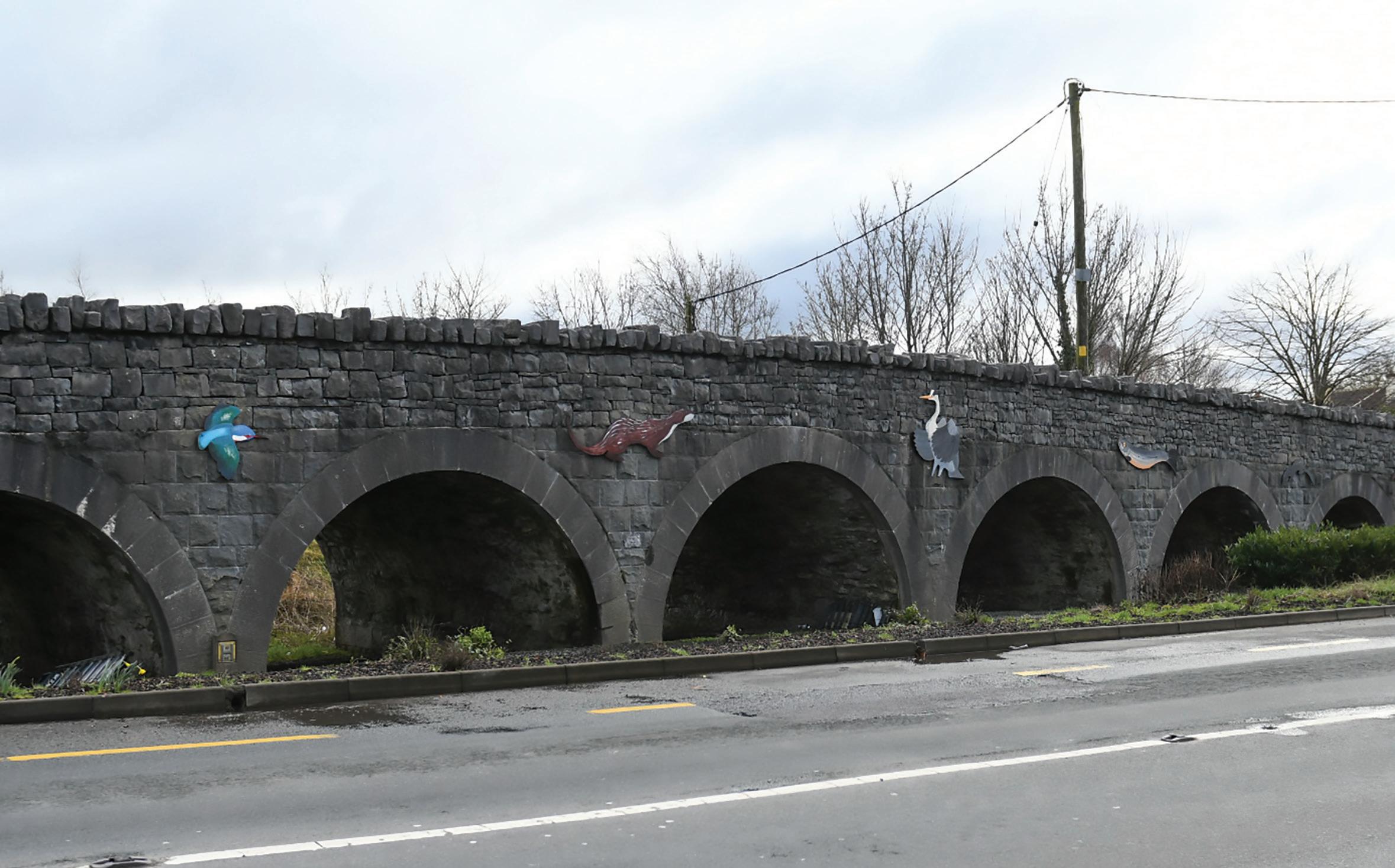
Irish Wildlife Summer ‘23 22
GORDON D'ARCY
River clare animal sculptures project
Thanks to the collective e ort and enthusiasm of pupils from Claregalway Educate Together School and a supporting cast from Tidy Towns, e Men’s Shed, Galway County Council, LAWPRO, Glynns Garden Centre and others, the village of Claregalway, on the edge of Galway City, has an exciting open air wildlife exhibition.
Locals, visitors and passers-by may enjoy the eight cut-out wildlife sculptures a xed to the (early 18th century) nine-arched stone bridge in the village. Commuters between Tuam and Galway, frustratingly grid-locked on the N17, will no doubt be grateful for this wayside artistic distraction.

e sculptural images (three times natural size) were rst expertly cut out from large marine ply-boards by the local Men’s Shed. ey were then transferred to the school to be painted by the pupils of 5th class. Over a period of two days and with the cooperation of their teacher and principal, all 28 pupils, subdivided into work-groups of four, participated in the artistic endeavour. e species – grey heron, dipper, king sher, otter, mink, trout, eel and salmon – chosen for reasons of distinctiveness, were rst outlined in pastel, then painted in acrylic. Finally, each was protected with a liberal coating of outdoor-resistant varnish.
Secure attachment to the face of the bridge was achieved by bolting the images to the metal brackets normally used for supporting oral baskets. e display will remain in situ until the oral baskets are returned for summer decorative purposes. While most of the pieces are situated above head-height it was (sadly) thought prudent to deprive the heron of its long legs; a pair of ‘tugable’ legs were considered too much of a temptation for idle hands!
e spring launch was a tribute to all those involved. Representatives of many groups were in attendance and the pupils and teachers of the Educate Together School received deserved media attention on the day. When it comes time for their removal the pieces will be stored in the school, to be brought out and displayed for future events.
e Claregalway wildlife display has signi cance beyond that of a school’s art exhibition. It can be seen as an attitudinal change towards the Clare River itself. Early maps represent the River as both hydrologically complex and untamed. Moll’s early 18th century map, showing worst-case scenario, depicts it as a meandering watercourse of overland and underground sections, linking large turloughs from north Co. Galway to Lough Corrib by way of the old bridge at Claregalway. e obvious reasons for drainage under the 1842 Act were to alleviate flooding and to provide much-needed relief employment during the Famine; engineering records speak of a minimum of 1,200 people being employed on the Clare Scheme at the time. Subsequent works under the 1945 Arterial Drainage Act drained most of the catchment for agricultural purposes and resulted in ‘canalising’ the river over much of its length. As was the case throughout Ireland (until the enactments of the Habitats Directive under EU law, in the early 1980s), there was absolutely no provision made concerning the impacts
of the drainage on wildlife. e concept of the Environmental Impact Assessment was simply unknown and in the face of social priorities, considered irrelevant. Apart from the recorded loss of some 500 wintering Greenland white-fronted geese (per R.F. Ruttledge) we have virtually no idea of the negative impacts on the ora and fauna of the entire catchment.
Nowadays, steeply cut and contained, the River Clare ows through Claregalway under a modern bridge, between an ancient abbey and a castle. e old bridge sits back from the N17, high and dry. Its wide span of nine arches suggests its former unpredictability and the threat posed to those who once lived along its banks. Since all the species shown in the display are still to be found (or have returned) to the River Clare, the display is also a statement about the inherent resilience of nature. Situated as it is on the face of the old bridge, the display adds an optimistic and futuristic dimension to the heritage of the village. Undertaken by the school and a consortium of willing helpers, the project hints at the beginning of a new era – one characterised by awareness and respect for the river as a rich wildlife habitat.
GORDON D'ARCY Irish Wildlife Summer '23 23
"THE SCULPTURAL IMAGES (THREE TIMES NATURAL SIZE) WERE FIRST EXPERTLY CUT OUT FROM LARGE MARINE PLY-BOARDS BY THE LOCAL MEN’S SHED"
LABEL? On the Part 2
 By CHRISTOPHER DOYLE and BILLY FLYNN
By CHRISTOPHER DOYLE and BILLY FLYNN
One of the most recognisable logos in the world is surely the FAIRTRADE mark. Depending on your own interpretation it might represent a human gure set against a landscape with a hand raised in a friendly wave.
en again, it may look like a blue and green ‘yin & yang,’ or indeed a landscape. Look again and you may see a drop of water, a seed, a bean or a sun. It’s certainly very clever, as the wide range of meanings re ects the vast range of impacts that the FAIRTRADE movement has had on our world and, centrally, its people. Buying a product with the FAIRTRADE mark means that this product has been fairly produced and traded. It also guarantees full traceability. You’ll only see the original mark on singleingredient products, such as bananas and co ee. Products that contain fairly produced and fairly traded ingredients but also others (e.g. cereal bars), may carry the mark but will show an arrow to denote this and they must tell you how
much of the product is fairly-traded and how much is not.













ere are also dedicated FAIRTRADE marks that speci cally give reassurance on the conditions under which products as diverse as gold and teeshirts are produced.
e FAIRTRADE movement has been in operation for over 30 years and has grown exponentially in this time. e older of the authors of this article remembers when to get a fairly-traded food item in Dublin (co ee was the rst, he believes), a food coop or Oxfam was your only outlet. All the major supermarkets now have fairly traded fruit, beverages and many other products. While a social justice movement, FAIRTRADE has also accelerated the move toward sustainability in the production of over 35,000 products. It supports local communities over more exploitative corporations. It has set up a number of ‘Climate Academies’ and also supports organic farming of food products in sensitive environments. Ranked as the most trusted of ethical marks, FAIRTRADE is now a global brand. Here in Ireland, FAIRTRADE has found fertile ground among Green Schools, development non-governmental organisations and is even promoted by Tidy Towns groups. Clonakilty, it is believed, was the rst of Ireland’s 48 FAIRTRADE towns.
Another widely seen logo is a cheerful graphic of a tree, the canopy of which is partially formed by a check-mark. Now bearing the strapline of ‘Forests for All Forever,’ this is the mark of the Forest Stewardship Council (almost always abbreviated to FSC). is will now commonly appear on furniture, packaging and many other products that use wood. Also widely recognisable and now widespread, the mark tells you that the trees used were harvested responsibly and that

























Irish Wildlife Summer '23 24 SUMMER FOCUS
"BUYING A PRODUCT WITH THE FAIRTRADE MARK MEANS THAT THIS PRODUCT HAS BEEN FAIRLY PRODUCED AND TRADED. IT ALSO GUARANTEES FULL TRACEABILITY"
there is no net loss of forest over time. Where ecologically important woodlands such as oldgrowth forests occur within areas of operation, these are identi ed and protected, they say. e work of the FSC has become even more signi cant as reversing deforestation and maintaining irreplaceable forests are crucial to ghting climate change. e work of the FSC also helps to protect the rights of indigenous people, watercourses, landscapes and rare species. Like the FAIRTRADE mark, the FSC logo is no longer niche and you’re likely to have FSC-marked product containers in your kitchen right now.
Perhaps one of the most environmentally signi cant food ingredients in latter years is palm oil, although many people might confess to not knowing much about it. If your aim is for your shopping choices to be as least impactful as possible, we’d advise that you look for the Certi ed Sustainable Palm Oil logo. While you’re at it, have a look at how many common products from biscuits to toothpaste contain palm oil.
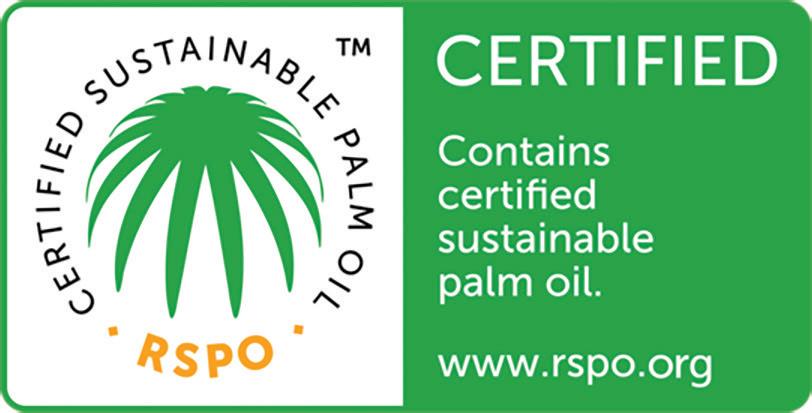
ere isn't space in this article to go into the weeds of the palm oil issue but su ce to say that it’s complex. e World Wildlife Fund for Nature (WWF), which supports the ‘Roundtable for Sustainable Palm Oil’ explains how this incredibly useful crop can have both disastrous and positive environmental and social impacts. Finally, a duo of logos that aren’t above some closer scrutiny.

Established in 1987, the Rainforest Alliance (RA), is a non-pro t that promotes sustainable operations and supply chains, as well as ecotourism while emphasising the importance of protecting surrounding ecosystems and local communities. RA certi es three main industries: forests, agriculture and tourism predominantly in tropical regions. Beyond certi cation, they also advocate to improve policy and pressure governments to act on human rights and nature conservation. Encouraging the sustainability of rural livelihoods is key to protecting biodiversity. ese lower-intensity farms can work better with nature than large monocultures that spread to the horizon.



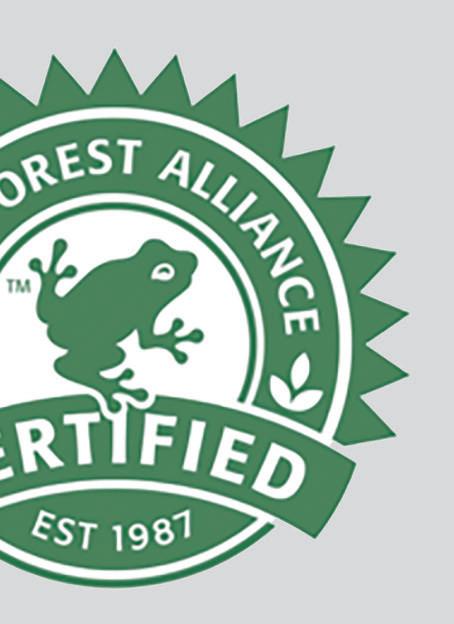

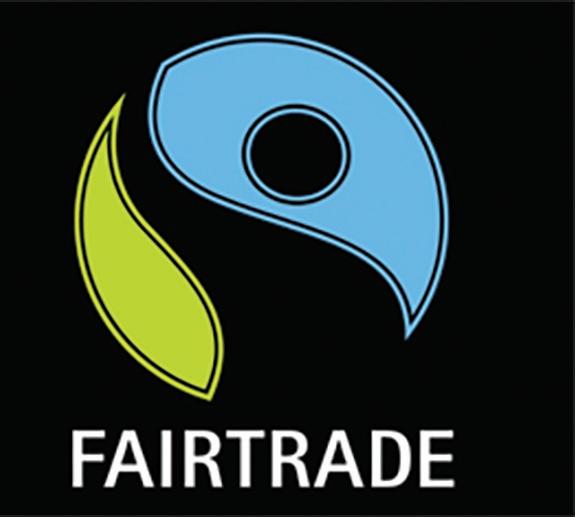
A label you will see less and less is UTZ. Founded in the Netherlands in 2002 to promote sustainable agricultural practices, social and living conditions, farm management and environmental protection in co ee and cocoa production, it merged with RA in 2018.


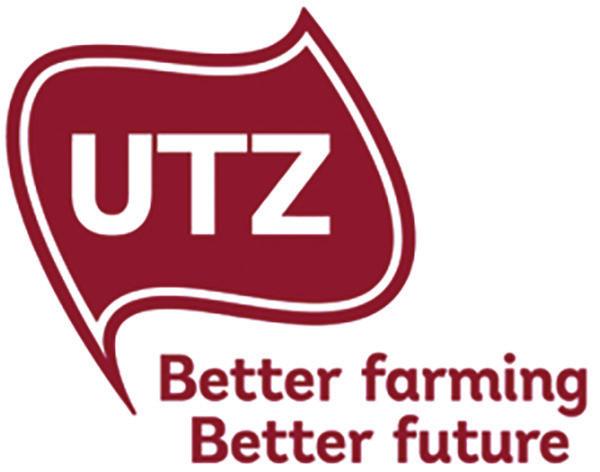
Critics of both schemes argue that they are not e ective enough at promoting sustainability as they do not tackle the root causes of environmental and social issues. ere have also been some issues with transparency, with farms being certi ed by auditors who have not thoroughly assessed them. Concerns have further been raised about the accessibility of the scheme to smaller farmers who may nd it di cult to engage with it and adapt quickly enough to the standards.
RA published their new certi cation programme in 2020, expanding on the previous version and incorporating UTZ products and standards. e revised programme aims to address the key challenges associated with sustainability certi cation - increasing the credibility and transparency of the certi cation system, improving the targeted outcomes and, importantly, increasing accessibility of the scheme to more producers. While we accept that in an increasingly connected world, what stu we get and how it’s produced is a complex a air. We’d urge you to look into it a little, starting with the o en tiny writing on the product you next li from the supermarket shelf.

Christopher Doyle is an ecologist with Flynn Furney Environmental Consultants Ltd. A graduate of Plant Biology in UCC, he is currently studying for an MSc in Bioeconomy with Business in MTU and UCD. An active member of the IWT, the On the Label articles are his rst contributions to Irish Wildlife.
See the spring issue of Irish Wildlife for a look at some of the food labels on Irish food and drink.
SUMMER FOCUS Irish Wildlife Summer '23 25
"ENCOURAGING THE SUSTAINABILITY OF RURAL LIVELIHOODS IS KEY TO PROTECTING BIODIVERSITY"
BY RICKY WHELAN, BIODIVERSITY OFFICER FOR OFFALY COUNTY COUNCIL


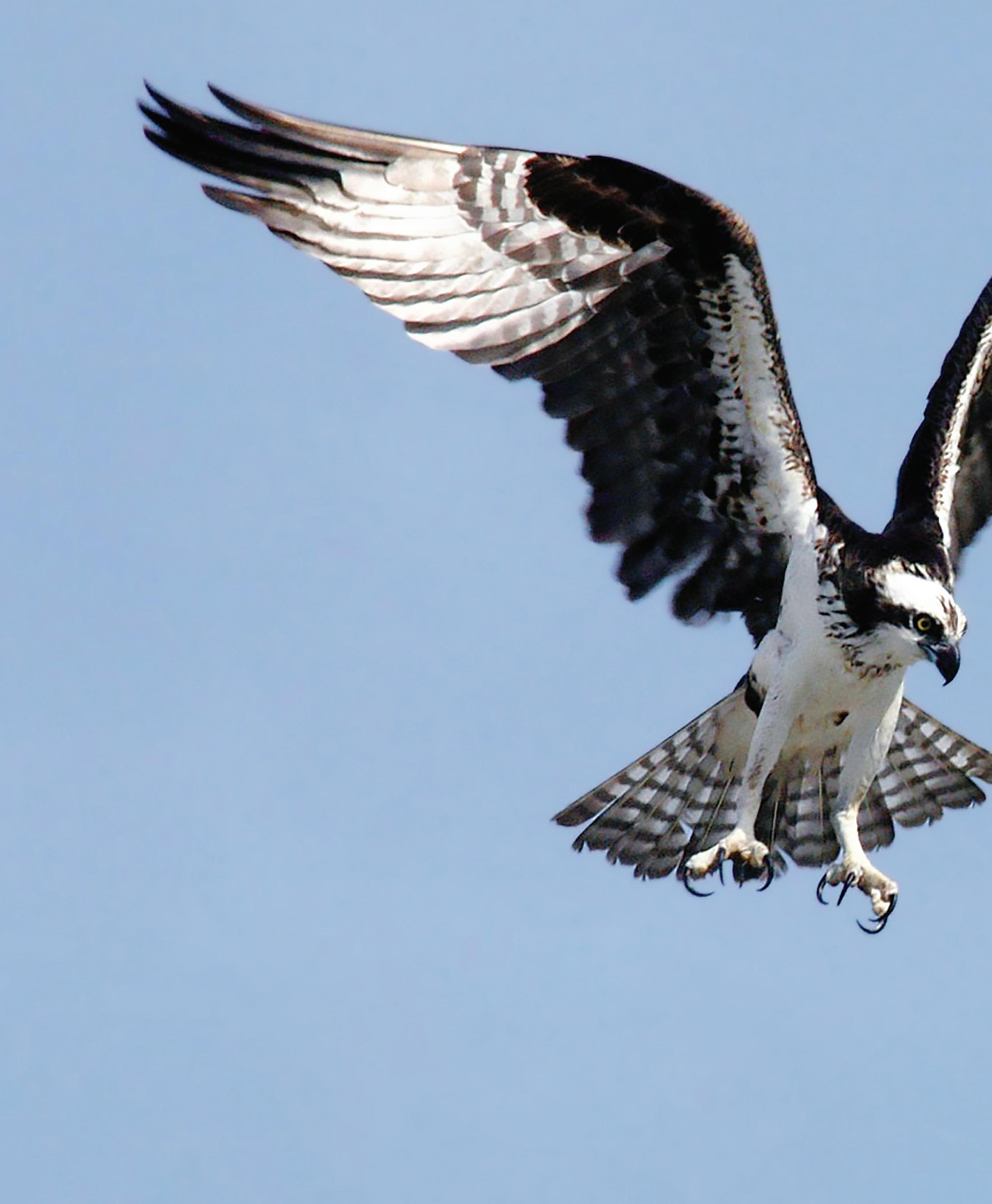
ForwardLooking




Irish Wildlife Summer '23 26 CITIZEN SCIENCE
Summer is here and it is to be welcomed and
there are a few more things of mention that I would consider good, hopeful news and which should be encouraging to anyone weary with the state nature has found itself in this country. Below are just some developments you may be happy to learn about.
A BIGGER, BETTER NATIONAL PARKS AND WILDLIFE SERVICE (NPWS)


In March 2021, a long-awaited review of the NPWS was initiated with the many recommendations published last May. In the last year or more the NPWS has been undergoing a major restructuring and recruitment drive. It’s di cult to comment on the changes going on internally but it is hugely heartening to see new Conservation Rangers being appointed to areas that have been long vacant whilst experienced sta move up the ranks, lling roles all the way up the chains of command regionally and nationally. It bodes well for the service and the renewed interest, support and investment from central government can only serve to make the long neglected NPWS ful l its remit a ectively and do the business for nature in Ireland.
APPOINTMENT OF HEAD OF HERITAGE & CLIMATE CHANGE AT THE HERITAGE COUNCIL
Catherine Casey (formerly Heritage O cer at Laois County Council) started as Head of Heritage and Climate Change with the Heritage Council
in December 2022. She will be responsible for the nationwide rollout of the Local Authority Biodiversity O cer Programme and for formulating and implementing Heritage Council Policy in relation to climate change and promoting climate and nature positive projects and policies, ensuring the Heritage Council ful ls its responsibilities under the Public Sector Climate Mandate.
BIODIVERSITY OFFICER PROGRAMME































In late 2022, the Department of Housing, Local Government and Heritage announced a commitment to support the funding and appointment of ten Biodiversity O cers across the local authorities. ey will join a small group of established Biodiversity O cers already working across four local authorities (mostly in Dublin). Further to this, Minister Malcolm Noonan announced funding for 11 more in early 2023 with a commitment to have one in place in all local authorities across the country by the end of 2024. e Biodiversity O cer network will be overseen by the Heritage Council in a similar vein to the Heritage O cer network. eir work will focus on advising respective county councils on biodiversity matters, as well as leading on, coordinating and promoting e orts to increase and protect wildlife and habitats across the
CITIZENS' ASSEMBLY ON BIODIVERSITY LOSS RECOMMENDATIONS LAUNCHED ON APRIL 5TH
Kicking o in May 2022 and a er countless hours of deliberation the Citizens' Assembly on Biodiversity Loss has published their report and list of recommendations which are broad, ambitious and far-reaching (see the campaigns o cer’s report in this issue). Two good indications have been both a positive
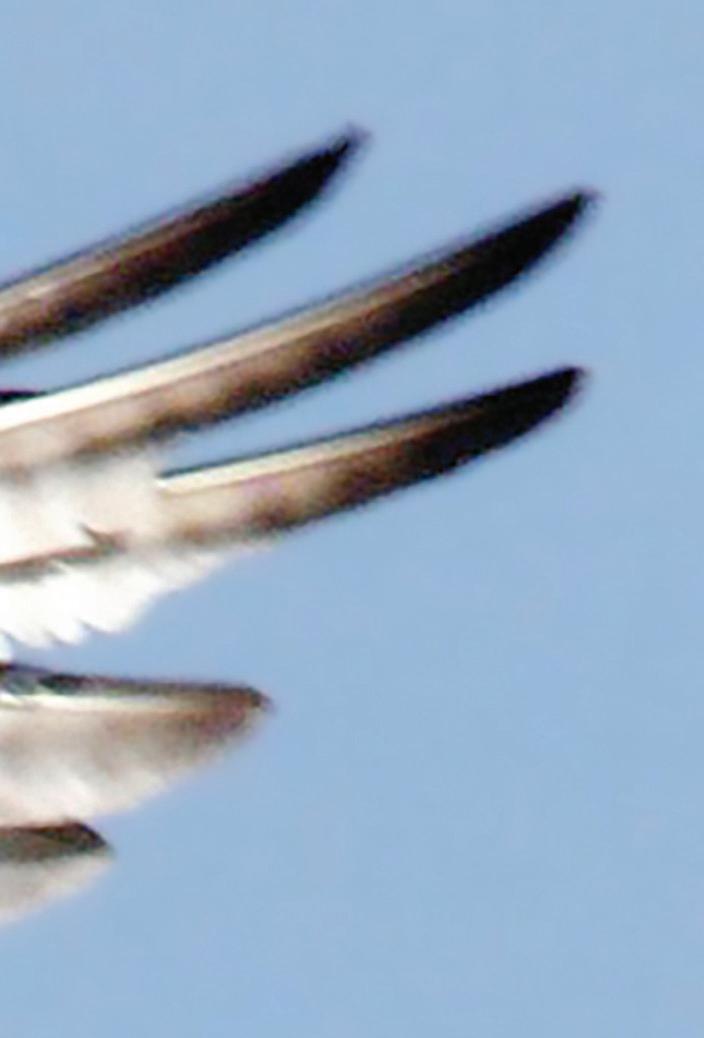
Irish Wildlife Summer '23 27 CITIZEN SCIENCE
Osprey. Photo: NASA
reaction from environmentalists, wildlife conservationists, plus others in the know and some push-back from the Irish Farmers Association (IFA) - because without that it would indicate to me at least that it wasn’t strong enough! It’s a very impressive document but we all know that’s all it will remain if the government doesn’t commit to action with the adequate resourses to see the recommendations realised.

IN-PERSON EVENTS AND CONFERENCES ARE BACK
Thankfully after the Covid years we now see an almost full return to normality with in-person events and conferences underway. Already this year some notable events have taken place including the 8th Irish Ornithological Conference which took place at University College Cork back in early-March, the excellent Wild Mind festival in Fenit, Co.Kerry in April and a brilliant Biodiversity Week in May. Furthermore we can look forward to the Moths Ireland Conference being hosted in Abbeyleix, Co. Laois on June 22nd (only the second ever and 17 years since the first!). Finally, we will be able to enjoy a full programme of Heritage Week (12th – 20th August) events this year. So do try to get back out to attend and support biodiversity themed events taking place across the country.
OSPREY REINTRODUCTION
This summer we will see the reintroduction of ospreys to Ireland with the species having gone extinct as a breeding bird here around 200 years ago. There have been efforts to encourage them to breed in Ireland and our habitats do suit, but despite this, and probable
breeding attempts in some places, they have never managed to re-establish themselves here since. Specialising in preying upon surface feeding fish (such as mullet), our near coastal and large freshwater bodies suit them perfectly and make them a good candidate for a reintroduction.
CRANES BACK ON TERRITORY IN COUNTY OFFALY
With the confirmed fledging of two common crane chicks reported from a Bord Na Móna (BNM) site in Offaly in 2022 (a return after 300 years), it is just wonderful to think that the same pair are likely welladvanced into their 2023 breeding attempt. With the experience of past failures and success, and with a close eye being kept on them by the ecology team at BNM we can only hope they will be successful again this year!
IN YOU NATURE PODCAST
Finally, it would be remiss of me not to mention the return of the In Your Nature podcast, with its spring season launched in late-April. In Your Nature now enters its third year of production with 37 bird & nature packed episodes to enjoy. There will be two further seasons (summer and winter) in 2024 for listeners to enjoy. The podcast features (me) Ricky Whelan, biodiversity officer with Offaly County Council in conversation with Niall Hatch of BirdWatch Ireland with regular expert guests and can be found wherever you get your podcasts.
By
Irish Wildlife Summer '23 28 CITIZEN SCIENCE
Ricky Whelan, Biodiversity Officer Offaly; Malcolm Noonan, Minister of State for Heritage and Electoral Reform; Virginia Teehan, CEO The Heritage Council and Martina Moloney, Chair The Heritage Council at The Heritage Council Headquarters in KIlkenny where the first counties welcome biodiversity officers under a new programme.
Alf Harvey
"THIS SUMMER WE WILL SEE THE REINTRODUCTION OF OSPREYS TO IRELAND WITH THE SPECIES HAVING GONE EXTINCT AS A BREEDING BIRD HERE AROUND 200 YEARS AGO"
By Aoife Dowd
Aoife Dowd is a Connemara based artist from the Gaeltacht area of Carna, Co Galway. She paints predominantly through the medium of oil paint. Her inspiration comes from observations of colour and light on the landscape that surrounds her.

The richness and depth of colour is a fundamental part of her creative expression.
You can check out her website is www.aoifedowdartist.com Twitter.com/aoifedowdartist ; Instagram.com/aoifedowdartist
FIADHLÚRA Irish Wildlife Summer '23 29
Faoi Bhláth
BY LOUISE OVERY OF THE IRISH ELASMOBRANCH GROUP
Irish waters are home to a vast and incredible array of species, including over seventy di erent species of elasmobranch (sharks, skates and rays). Elasmobranchs are an essential part of marine ecosystems as well as an important part of Ireland's natural heritage, with signi cant conservation and cultural importance.
In the 2016 Red List assessment of Ireland’s cartilaginous sh it was found that 17 of the 58 species assessed are at risk of extinction. e angel shark Squatina squatina was listed as Critically Endangered. If major actions are not urgently taken to reduce pressures and safeguard the remaining populations, the species will become extinct.



ANGELS BENEATH THE WAVES


e angel shark was previously found across the East Atlantic and Mediterranean Sea but has seen drastic local population declines. In Ireland, there are only a few remaining locations where a rare encounter is still possible.
e species name, Squatina squatina, and its many colloquial names such as Banjo Fish and Fiddle Fish all provide good imagery of its attened body. is adaptation is ideal for hiding in the sand ready to ambush its prey, which includes smaller sh species, molluscs and crustaceans. Here in Ireland, the species is locally known as monk sh but it is a separate species to the Angler sh Lophius piscatorius which also shares the same common name.
Angel sharks (like many elasmobranch species) have various biological traits that make them particularly sensitive to any pressures. For instance, their demersal lifestyle (ground dwelling) makes them particularly at risk from bottom sheries as bycatch (unintentional landing during shing). ey mature late in life and have a slow reproductive rate, and are generally thought to only breed every second year. All these factors mean that their population is particularly slow to recover from any losses. e species today is a prohibited species for sheries; meaning that it is illegal to catch and if accidentally landed they cannot be retained on board and should be released alive as quickly as possible following the best handling practices.

ese sheries protection measures are already in place here in Ireland and all shers have been supportive in releasing and recording any that are accidentally caught. However, the plight of this species is severe, bordering on the edge of extinction not only in Irish waters but all across their range. Given this, the Irish Elasmobranch Group have recently launched a dedicated conservation project; Angel Shark Project: Ireland.
PROJECT
(Angels of Ireland?)
FAMILIES, FISHERS, FRIENDS, AND INDIVIDUALS FROM ALL OVER IRELAND ARE INVITED TO HELP TOWARDS THE UNDERSTANDING OF A CRITICALLY ENDANGERED SHARK SPECIES, THROUGH THE DISCOVERY OF OLD RECORDS OR THE REPORTING OF NEW SIGHTINGS

Irish Wildlife Summer ‘23 30 FRONT LINE
"IRISH WATERS ARE HOME TO A VAST AND INCREDIBLE ARRAY OF SPECIES, INCLUDING OVER SEVENTY DIFFERENT SPECIES OF ELASMOBRANCH"
Mouth of the angel shark. Photo: Shutterstock
A COMMUNITY LED RECOVERY
The project aims to work collaboratively with the support of fishers, fishing associations, stakeholders, scientific advisors, and local communities. In doing so, it aims at collectively identifying effective actions to help support their recovery for future generations - a community-led recovery.
The project will also support the work of the wider Angel Shark Project teams who are all working towards safeguarding angel sharks all across their range. To begin to help support their recovery the four initial overarching goals of the Irish team are:
1Collection of past and present records. To help develop further insight into the life history and ecology of the angel shark using current and historic records from all around Ireland which will help to identify important areas for the species.
2Stakeholder engagement. Working with all stakeholders and surrounding local communities towards the development of a collaborative action plan – a community-led action plan.
3Ecosystem approach. To focus on one of the last known angel shark hotspots in Ireland to broaden our understanding of their ecological requirements. The collective sharing of information between the international Angel Shark Project teams will further enable us to collectively identify key areas and actions for this species all across their range.
4Public outreach. Engage and inspire an awareness of angel sharks and elasmobranchs through outreach and educational events.
The angel shark is also an excellent flagship and umbrella species, meaning that any support given to them will also help to protect many other species and other demersal elasmobranchs such as the endangered undulate ray and the critically endangered white skate.
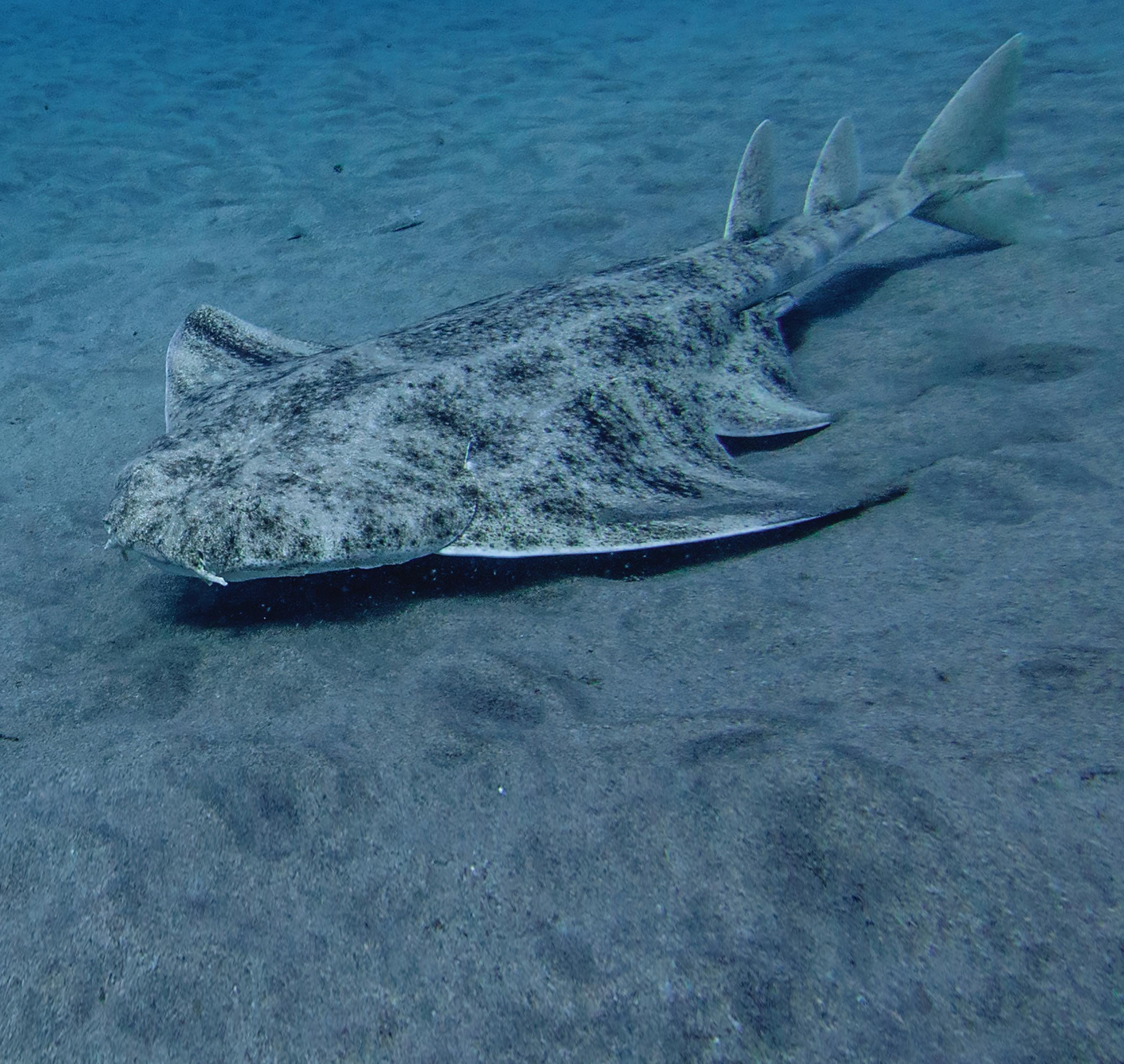
ACKNOWLEDGEMENTS TO DATE!
The team would like to take this opportunity to thank all those that have offered their support, knowledge, submitted records and chatted with us! We would also like to acknowledge the support of the Tralee Oyster Fishery Society who have recently all voted to close-off an area within Tralee Bay to oyster dredging in the support of elasmobranchs and the wider ecosystem effects of such an action.
The Angel Shark Project: Ireland is a partnership between Munster Technological University, Natural Resources Wales, Zoological Society of London, Leibniz Institute for the Analysis of Biodiversity Change and Universidad de Las Palmas de Gran Canaria, and works in close collaboration with Inland Fisheries Ireland, University College Dublin, Sea Fisheries Protection Authority, National Parks and Wildlife Service, Marine Institute Ireland, Kerry Irish Wildlife Trust and Mara Beo. The project has gratefully been given seed funding by the Shark Conservation Fund for the next three years.
For more information check out www.irishelasmobranchgroup.com or to learn more about the other angel shark projects check out www.angelsharkproject.com. If you would like to contact us directly about the project, or if you have any information, both past or present, about angel sharks around Ireland, then we would be delighted to hear from you at angelsharksireland@gmail.com.
We are also on Facebook, Twitter or Instagram, so please like, follow and share!
Irish Wildlife Summer ‘23 31 FRONT LINE
�Angel shark. Photo: Shutterstock
RIVER FLOWS Restoring
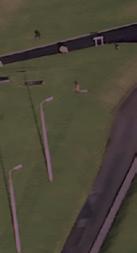 By RICHARD NAIRN
By RICHARD NAIRN

The River Vartry ows through the centre of my local village of Ashford in County Wicklow. Some days the clear water ows gently through the boulders and water plants under the bridge. At other times it is a roaring torrent, heavy with sediment and coloured brown with mountain peat. For most of the time I have known it there was a steep concrete and stone weir just upstream of the village, a place where a familiar heron o en stood, still as a statue, waiting for passing sh or frogs to appear at the edge of the pool. en, during one major ood, the weight of water building up behind the barrier caused a crack to develop in the face of the weir. Within a few days the structure had broken
up and oodwater poured through the weir as if released from captivity. In e ect, the river was returning to its natural bed. River fragmentation is the breaking up of a river’s continual ow from source to the sea. It is one of the greatest global threats to freshwater ecosystems because it interrupts sh migration, alters the ow of sediment throughout the channel, a ects habitat diversity and reduces overall biodiversity. Irish rivers are heavily fragmented by weirs, dams, sluices, culverts, bridges and other arti cial barriers. ese structures cause the loss of many natural features and add to the other pressures on biodiversity such as water pollution, channel alteration and water abstraction. Inland Fisheries Ireland (IFI), the government agency that aims to protect our shery waters, together with the Local Authority Waters Programme (LAWPRO), have identi ed over 73,000 potential barriers on

Irish Wildlife Summer '23 32 WILD RIVERS
the Irish river network. However, there is no evidence that they are removing or modifying any of these.
Internationally, there is mounting evidence that the removal of barriers in rivers can make a major contribution to restoring nature in the freshwater environment. The EU 2030 Biodiversity Strategy calls for greater efforts to restore freshwater ecosystems and the natural functions of rivers. It sets a target to make at least 25,000 kilometres of rivers across Europe free-flowing again by 2030, primarily by removing obsolete barriers and restoring floodplains and wetlands. The EU interprets ‘free-flowing rivers’ to mean rivers or other surface water bodies such as lakes that are not impaired by artificial barriers and not disconnected from their floodplain.
One of the latest examples of such flow restoration is on the Sélune River in Normandy, France. With two obsolete dams, the Vezins and La Roche Qui Boit, currently being removed, 90 kilometres of waterway will soon be opened up, allowing Atlantic salmon to migrate once again to their ancient spawning grounds. With barrier removal increasing juvenile salmon habitat threefold, it is hoped that the number of adult salmon returning annually to the river will increase by more than 1,400. Five weeks of work in 2022 at Scotton Weir on the River Nidd in Yorkshire, England has resulted in the full removal of the former barrier, reconnecting 35 kilometres of river and tributaries. The River Nidd is a major tributary of the Humber basin, the largest catchment within Britain. The weir removal project, the

largest in the UK to date, will restore fish migration for salmon and eels which have received boosts from weir removal or fish passage projects on other Humber tributaries.

The construction of the Ardnacrusha dam and power station just upstream of Limerick in the 1920s also had negative impacts on the River Shannon which drains about one seventh of the country. Despite the later addition of fish ladders, it caused a major barrier to migrating fish, largely destroying important salmon and eel fisheries and impounding water in the Parteen reservoir. Hundreds of dead eels were found downstream of the dam last year. When it was built, Ardnacrusha had the capacity to supply power for the entire country. With demand now increased by a huge extent, it currently accounts for only 2 to 3% of the ESB’s overall power output. With the expansion of other renewable sources there is now a strong case for phasing out this unnecessary infrastructure and restoring water flow to the natural channel.
In Ireland, the migration of salmon, sea trout and lamprey from the ocean to their spawning grounds in the headwaters of many rivers has been interrupted by barriers such as weirs, culverts and hydroelectric stations. The removal of these significant barriers would open up a huge number of tributaries to migratory fish and many other species and restore our rivers to the channels they have occupied for thousands of years. The singer Karine Polwart wrote, ‘while kingdoms come and kingdoms go, rivers run and river flow’.
Richard Nairn is an ecologist and author. His latest book Wild Waters is published by Gill Books and available in all good bookshops – see our competition page for a chance to win a copy.
WILDLIFE RIVERS Irish Wildlife Summer '23 33
"THE CONSTRUCTION OF THE ARDNACRUSHA DAM AND POWER STATION JUST UPSTREAM OF LIMERICK IN THE 1920s ALSO HAD NEGATIVE IMPACTS ON THE RIVER SHANNON WHICH DRAINS ABOUT ONE SEVENTH OF THE COUNTRY"
�Dr Will O'Connor found many dead eels downstream of Ardnacrusha. By Will O'Connor
Ardnacrusha dam on the River Shannon. By Will O'Connor
IWT PHOTOS OF THE MONTH
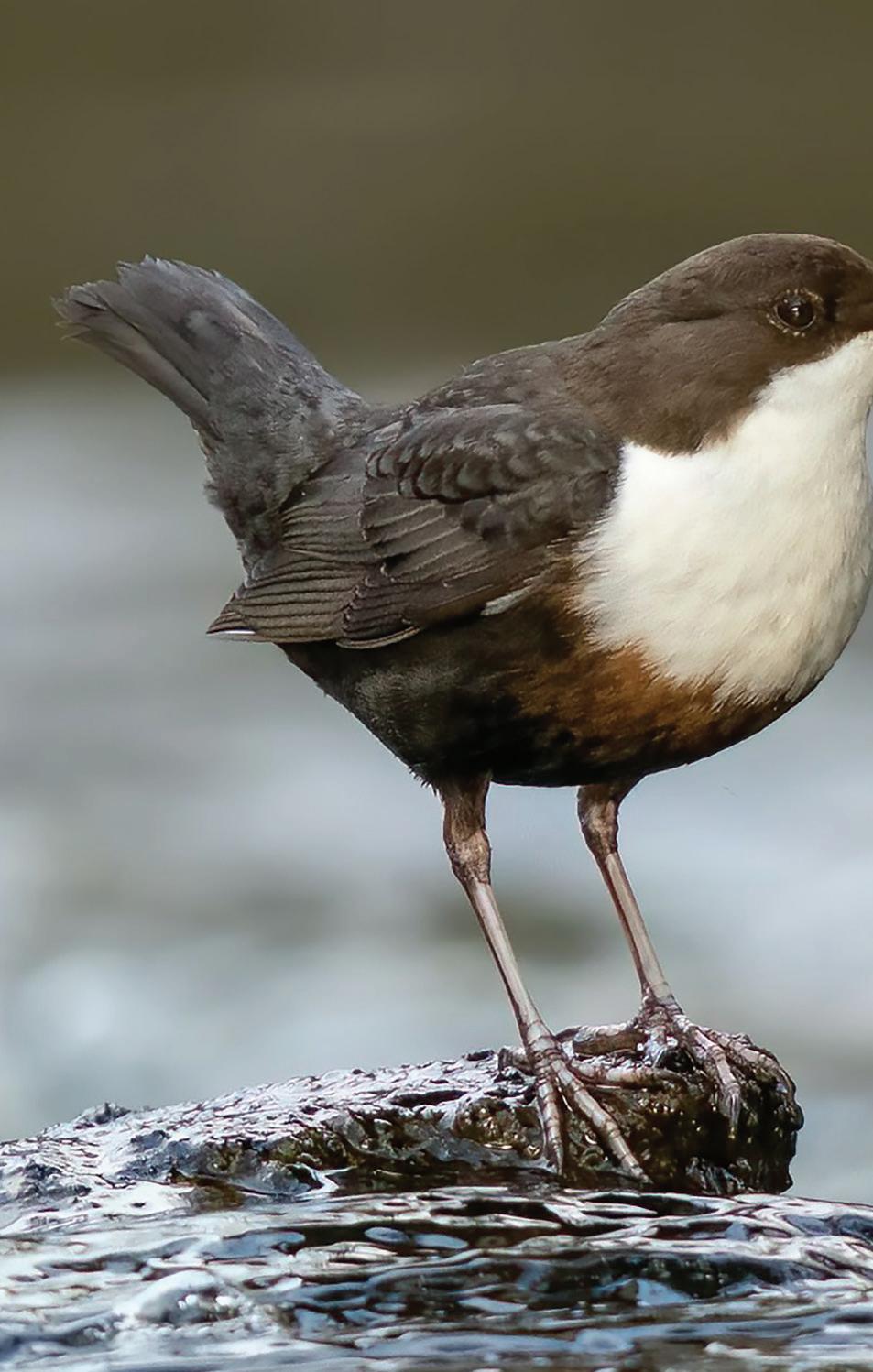

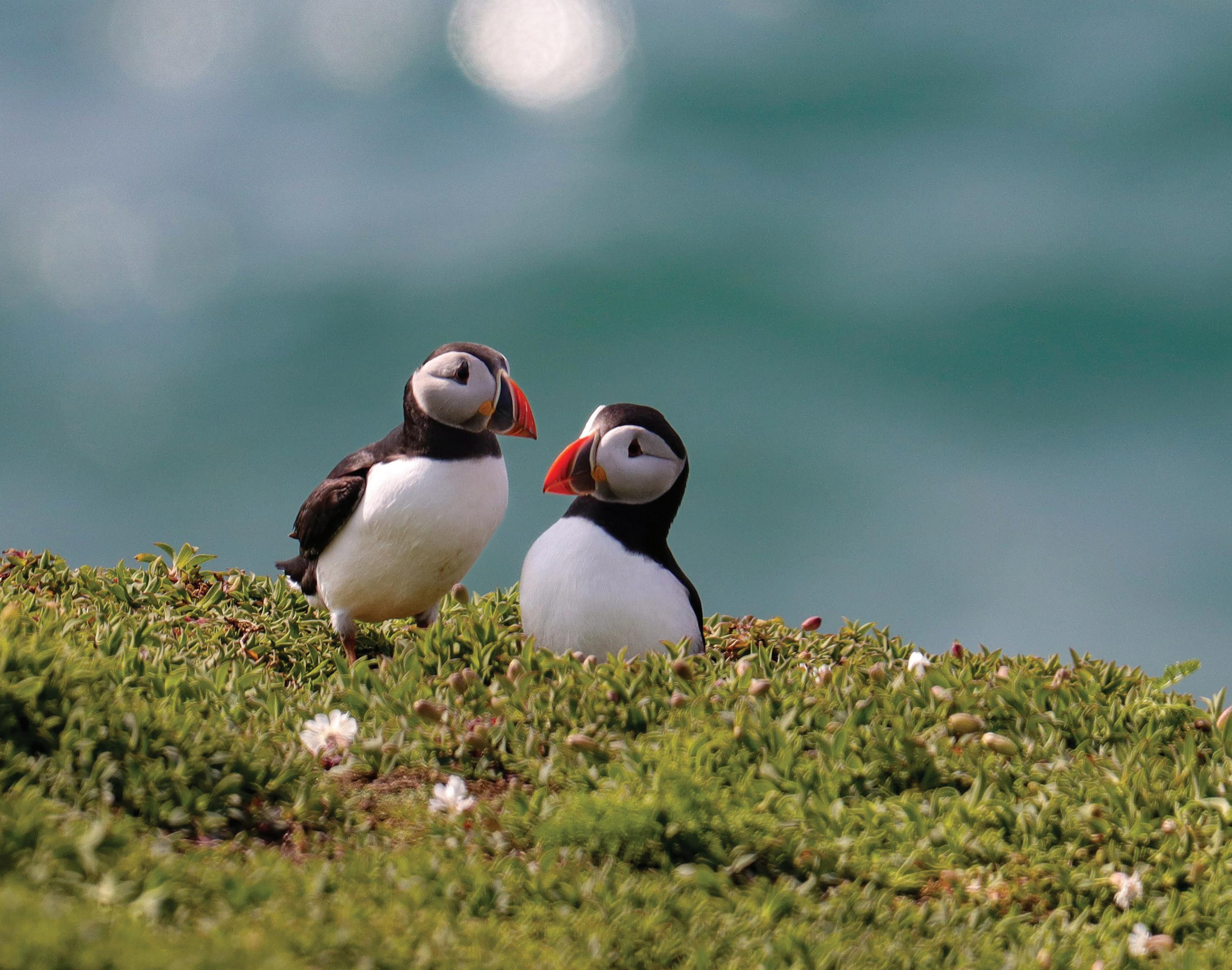
OF THE MONTH Irish Wildlife Summer ‘23 34
PHOTO
1. The Saltee Puffins by Aoife Kavanagh
2. Buff-tailed bumblebee by Robin Barnes
3. Dipper by Richard Maxwell
4. Bullfinch by Alan Johnston
5. Great Crested Grebes by Piotr Rak
1
2 3
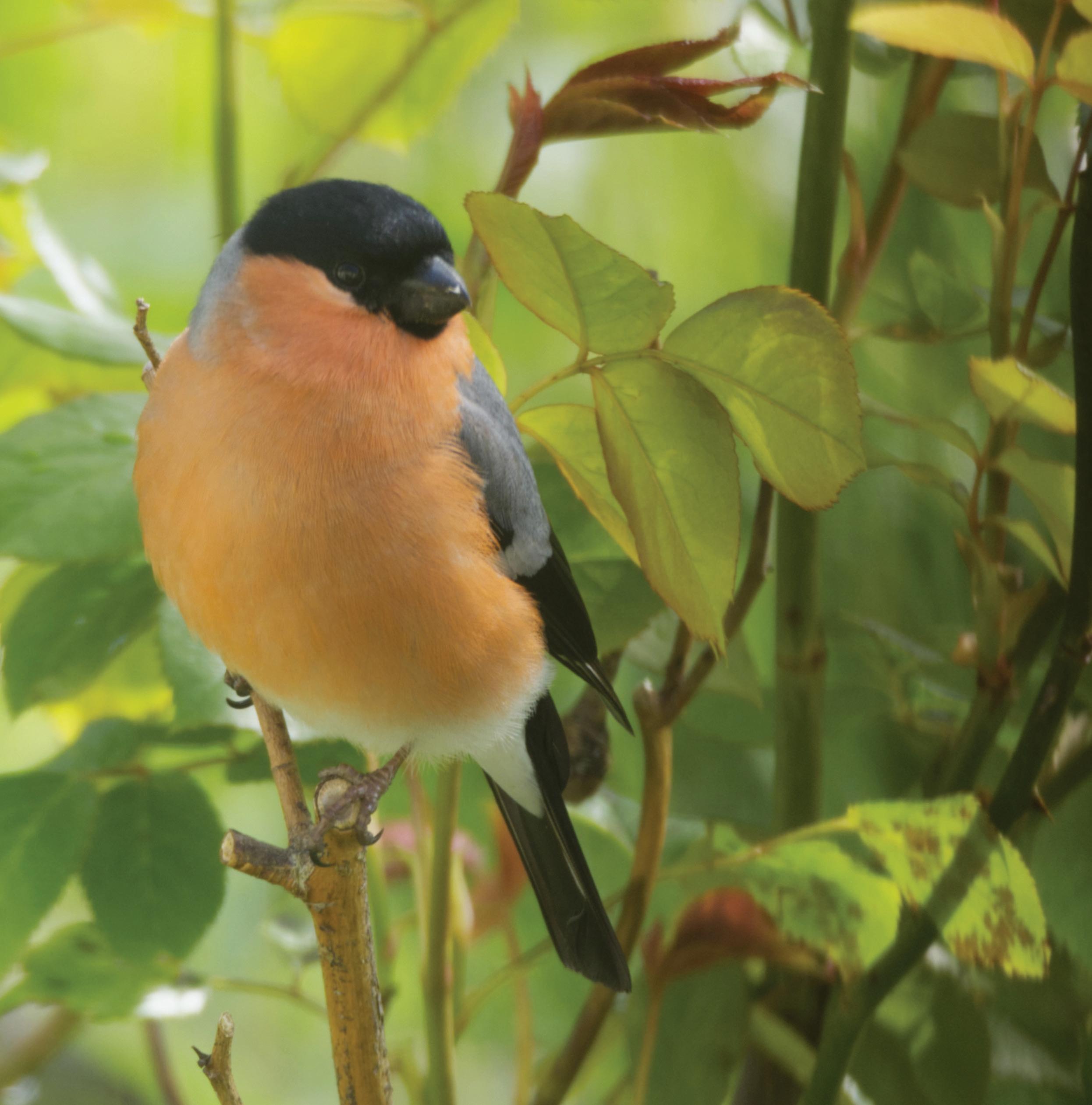



‘23 35 4 5
PHOTO
OF THE MONTH Irish Wildlife Summer
COMPETITION
Your chance to win a new book as well as one of our IWT branded t-shirts! We have three copies of ‘Wild Waters’ and five T-shirts to give away
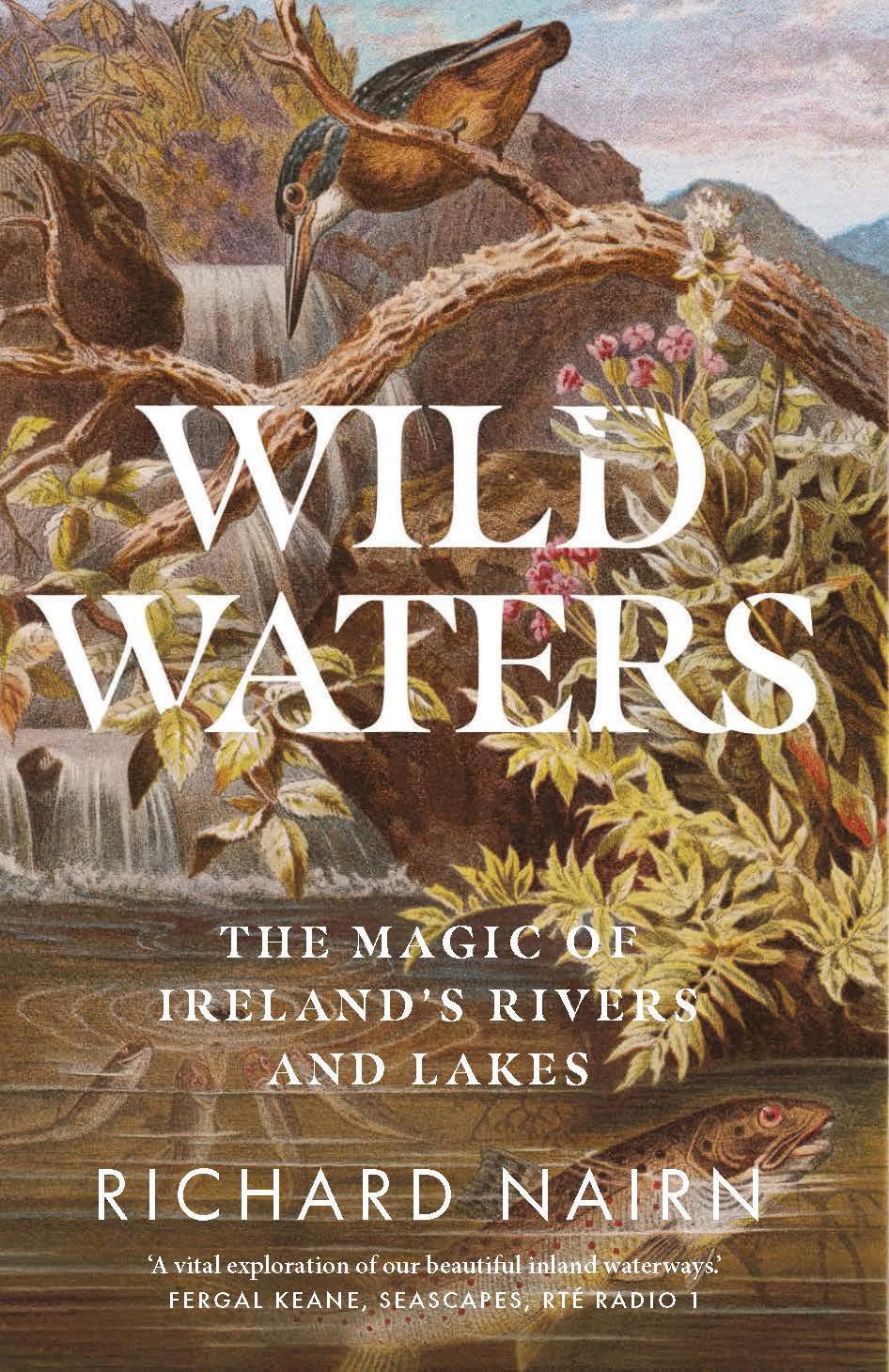
Wild Waters by Richard Nairn ( Gill Books)

In a unique mix of nature, history and personal experience, ecologist Richard Nairn explores and celebrates the rivers and lakes of Ireland. Beginning with the Avonmore River system which flows through some of the most picturesque parts of Co. Wicklow, Wild Waters reveals the magic of Ireland’s rivers and lakes. Richard Nairn is an ecologist and writer who has published six previous books. This is the third volume of his memoirs following the acclaimed titles Wild Woods (2020) and Wild Shores (2022). With a master’s degree in Zoology, he previously worked as a nature reserve warden and was the first Director of BirdWatch Ireland. He is an experienced writer who has shown his ability to make complex subjects accessible and entertaining to a broad readership while earning praise from scientists for meticulous research.
writer who has shown his ability to make
You also have a chance to win one of the new designs of our organic clothes range of T-shirts. The IWT has a range of inspiring, ethical T-shirts, jumpers and tote bags in a range of styles to highlight our campaigns to protect nature. See https://iwtclothing.com/ for full details.


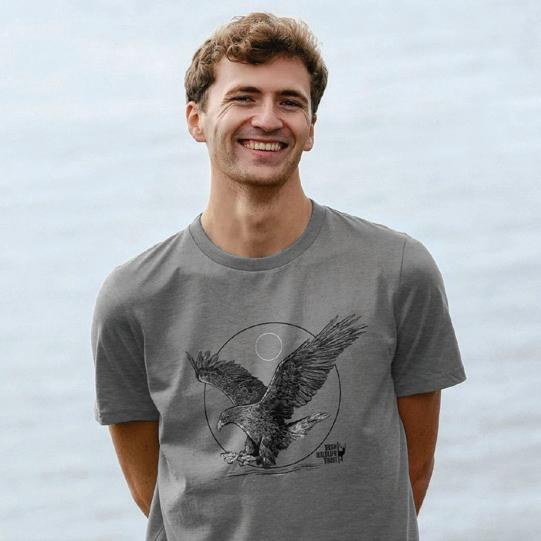
To win one of these great prizes just answer this question:
What bird of prey is set to be reintroduced after becoming extinct from Ireland over 200 years ago?
Send your answer, name, address, prize preference and the design and size of the t-shirt that you would like to win to magazinecomp@iwt.ie by July 31st 2023.








Spring issue.
In our spring issue we gave readers a chance to win a copy of ‘Wild Atlantic Rainforest’ by Eoghan Daltun or an IWT branded t-shirt. The answer to the question is the common crane (the bird that successfully reared chicks in 2022 for the first time in over 400 years). Congratulations to Frank Spellman from Glenageary in Co. Dublin and Paddy Rooney from Leixlip in Co. Kildare who won a copy of the book and Maitiú Ó Coimín from Indreabhán in Co. Galway, Barbara Devine from Kilmacanoge, Co Wicklow, Paul Dowling from Maynooth in Co Kildare, Hans Kottelaar from Heerlen in the Netherlands and Eoin C. Bairéaid in Dublin who all won a t-shirt.
Irish Wildlife Summer ‘23 36 COMPETITION
Please fill in your name, cut out and keep your new membership card to present at talks and other events.
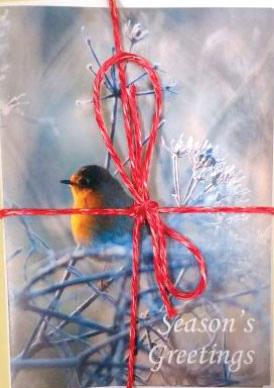





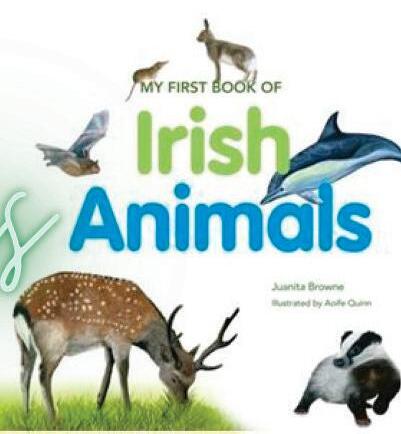














































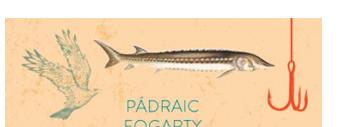

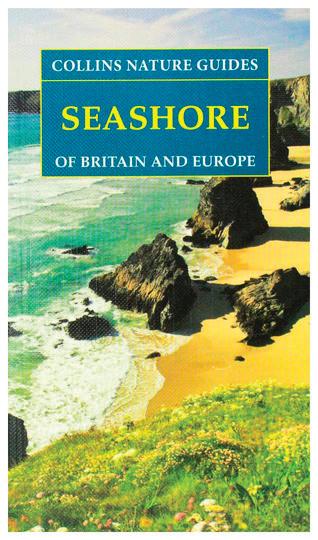























Cards valid until the end of 2023.












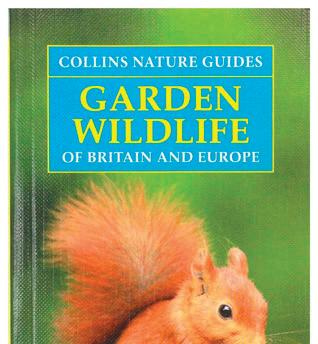
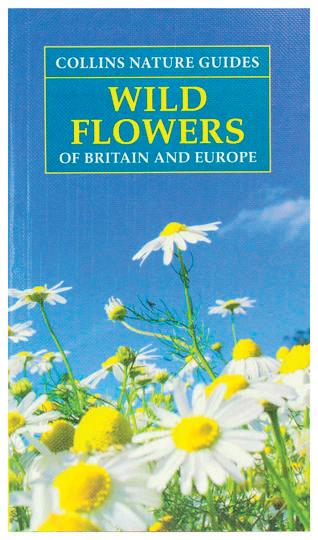






Introducing the new Irish Wildlife Trust membership card.
Card 2023 Individual members, please ll in your full name. Family members, please ll in your family name. Card valid until end of 2023.
Membership
wt.ie/sh iwt.ie/sh w iw shop hop








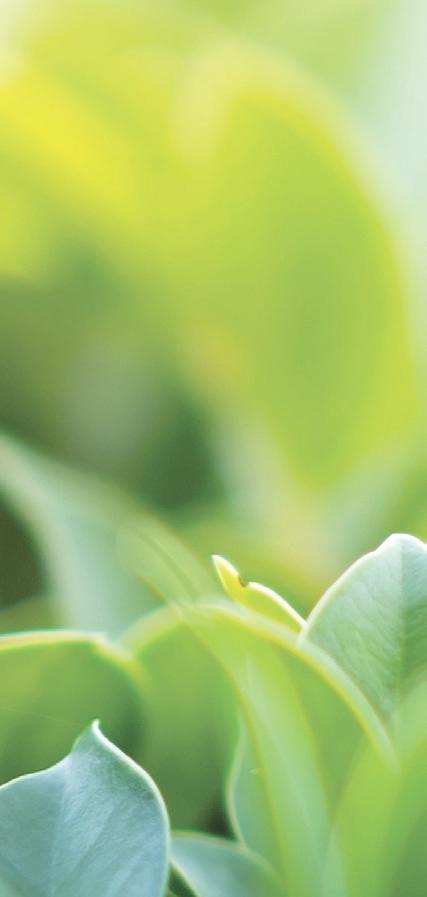
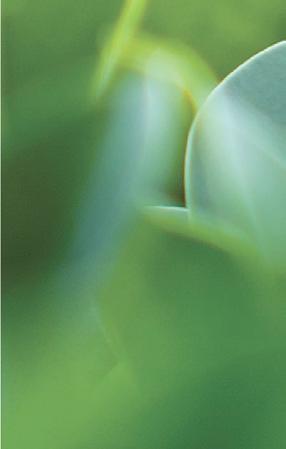





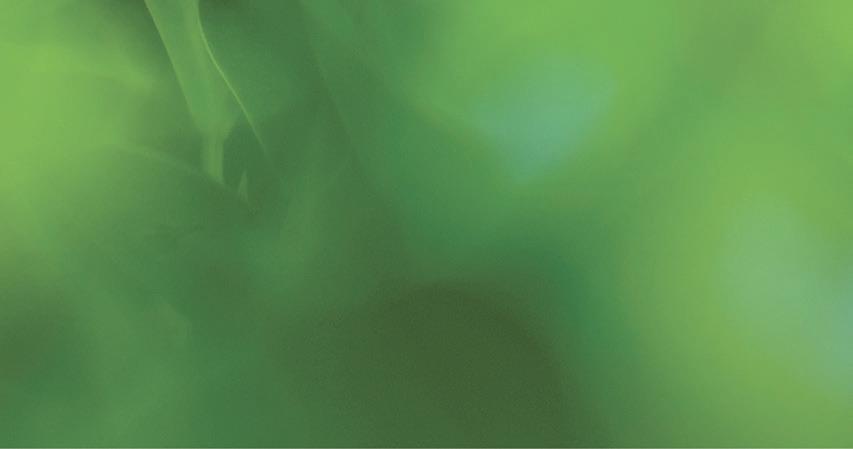
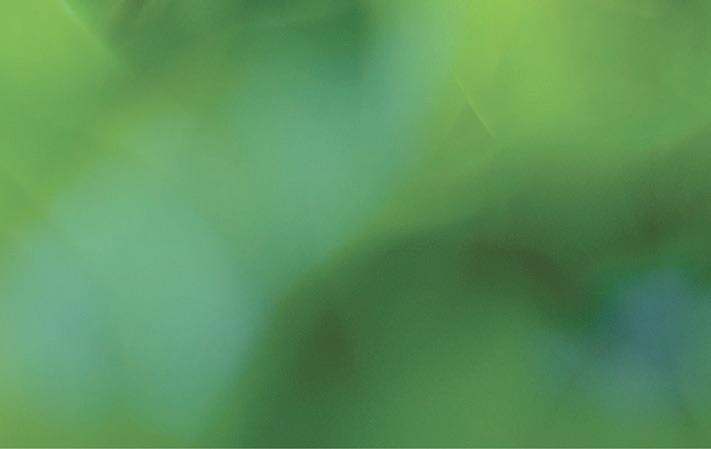

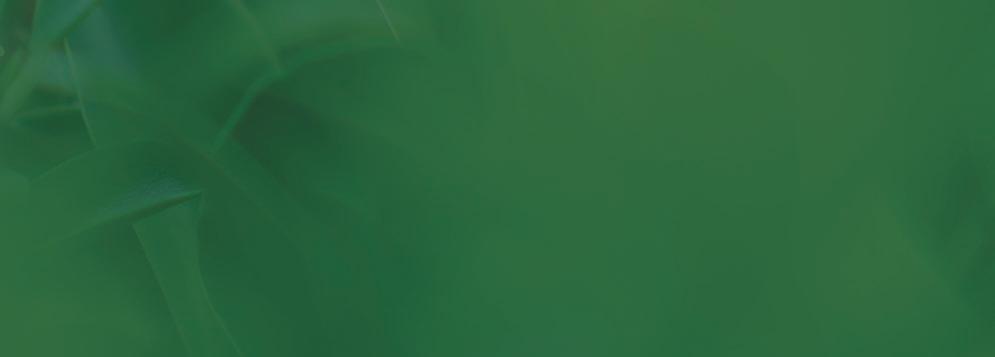







Full of fun facts and features about nature PLUS an A3 poster each issue The Badger Club Our Junior IWT Membership subscription €15 Only per year Join the Badger Club to recieve our quarterly Junior Magazine





































































































 By Tim Clabon
By Tim Clabon





































 Squalus acanthias, spurdog.
Squalus acanthias, spurdog.















 BY FINTAN KELLY , AGRICULTURE AND LAND USE POLICY AND ADVOCACY OFFICER AT THE ENVIRONMENTAL PILLAR
BY FINTAN KELLY , AGRICULTURE AND LAND USE POLICY AND ADVOCACY OFFICER AT THE ENVIRONMENTAL PILLAR














 BY GORDON D'ARCY
BY GORDON D'ARCY



 By CHRISTOPHER DOYLE and BILLY FLYNN
By CHRISTOPHER DOYLE and BILLY FLYNN




























































 By RICHARD NAIRN
By RICHARD NAIRN

























































































































